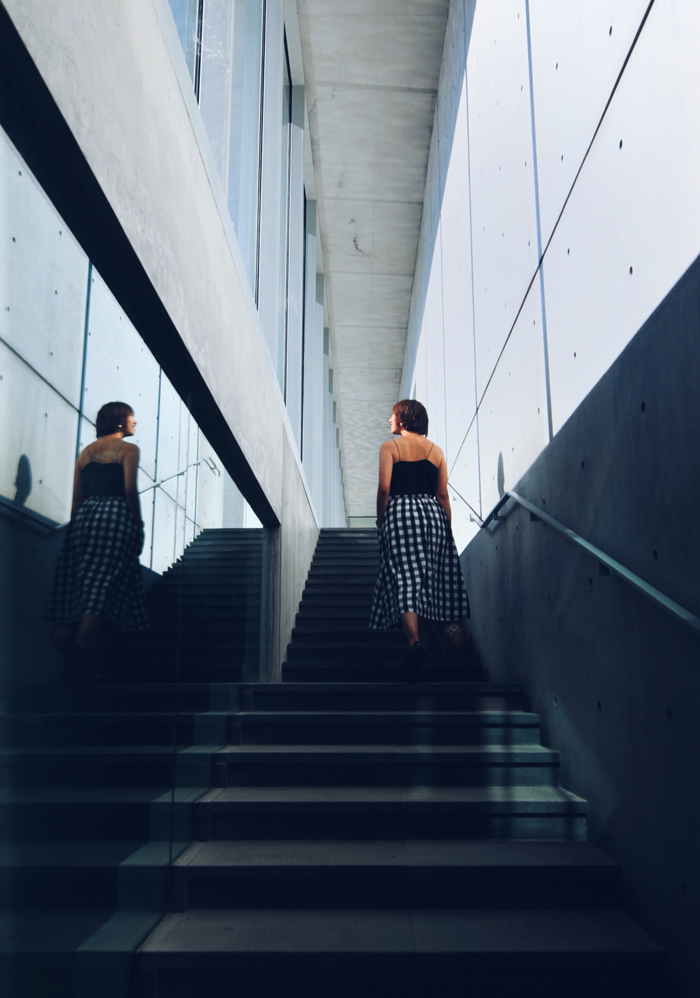
The month of September was for me under the sign of vacations with a stay in Brittany (which I will detail soon) but also of a short escapade in the south of France, slightly oriented by the desire to visit a particular place for a few years.
Indeed, since this 2018 exhibition, I have been fascinated by the work of Japanese architect Tadao Ando and my desire is to be able to admire as many of his creations in situ as possible. When I learned that he had participated in the redevelopment of the Château La Coste wine estate near Aix-en-Provence and its transformation into an exceptional place, I noted this idea of a visit in my list of “Places to see at least once in my life”. Since September 12th, I can check this name in my list as Completed!
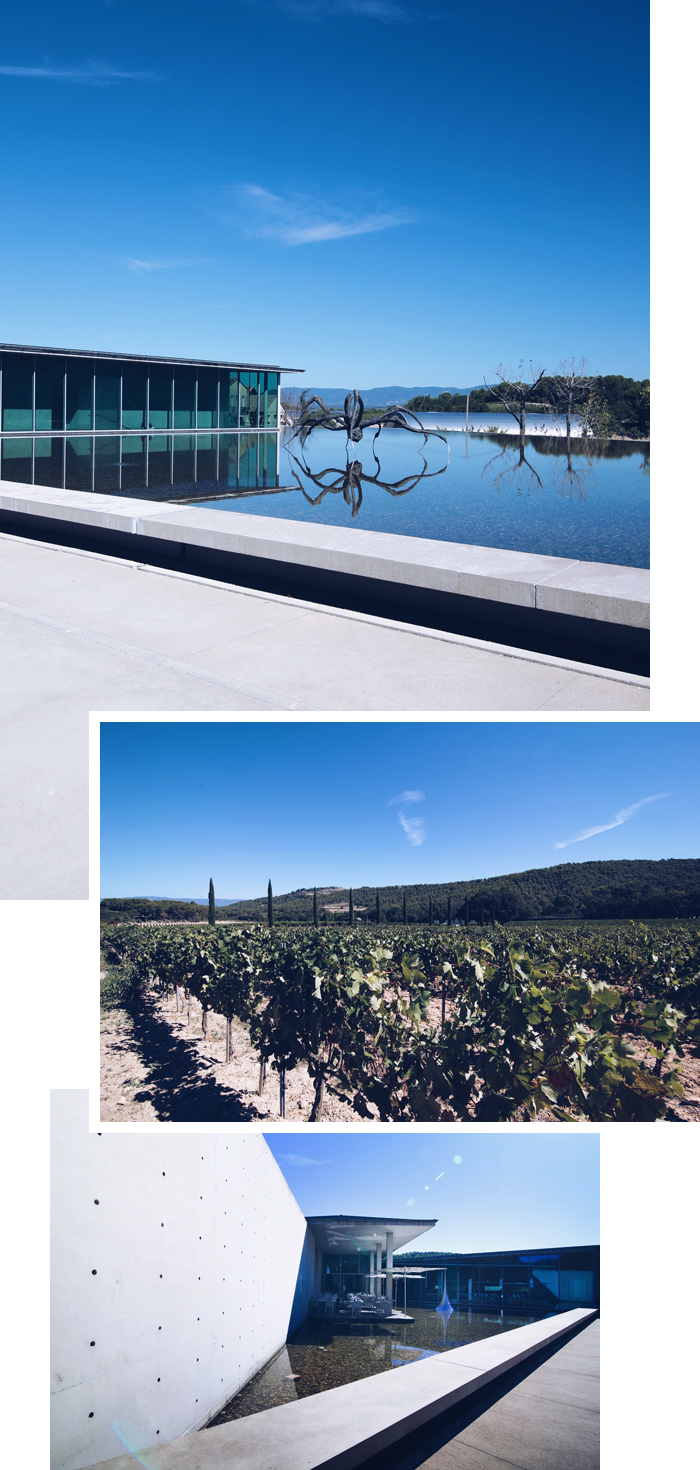
The Art center by Tadao Ando at Château La Coste
So it is with an undisguised enthusiasm that I am going to share with you my visit in this place mixing art, nature and gastronomy, trying to give you as many advices as possible if you decide to go there. New works and exhibitions are added every year: I hope to have the opportunity to go back in the future because, as I expected, I was totally seduced by the place!
GETTING TO CHATEAU LA COSTE
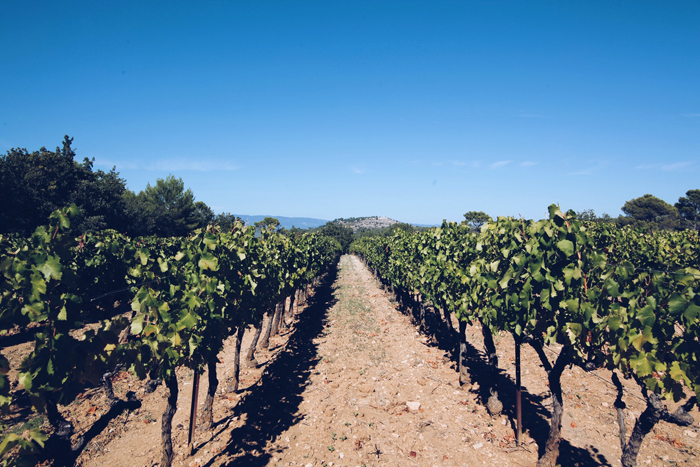
Château La Coste winery is located about 20 minutes by car from Aix-en-Provence, in the commune of Le Puy-Sainte-Réparade. I’m not sure that the place is well served by bus, so if you don’t have a car, consider taking a cab… unless you have a helicopter, as the place has a landing zone ^^ !
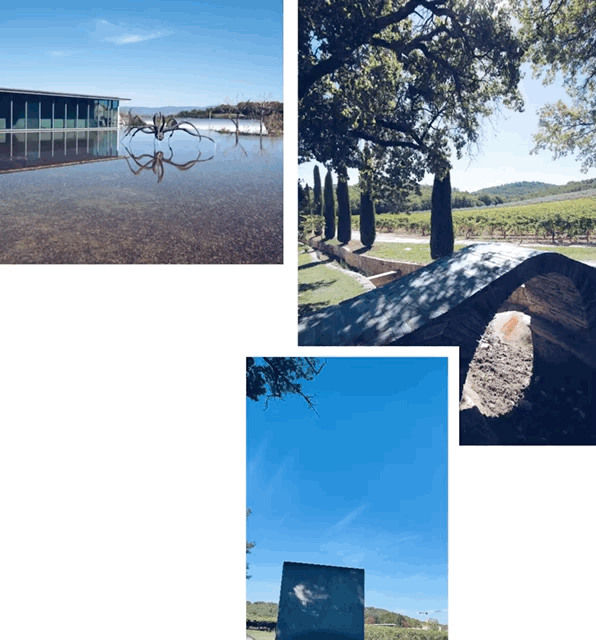
By car (=our humble means of transportation), it is easy to park in the underground parking under the art center, the main building designed by Tadao Ando. Access to the art and architecture trail is subject to a fee (€15 per adult).
WHEN ART HARMONIZES WITH NATURE
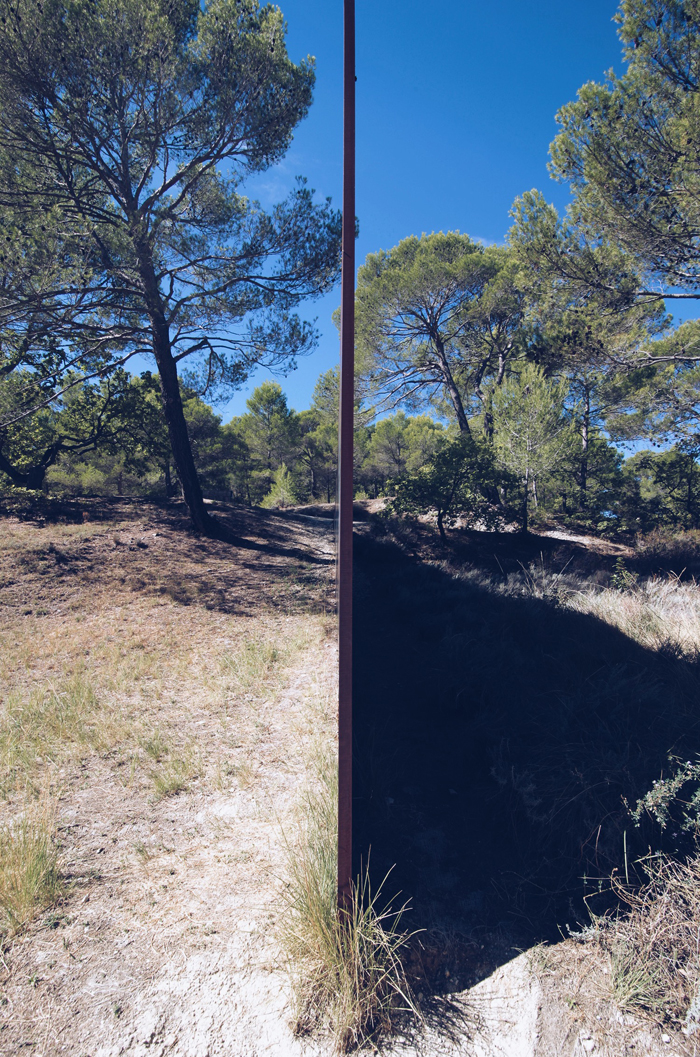
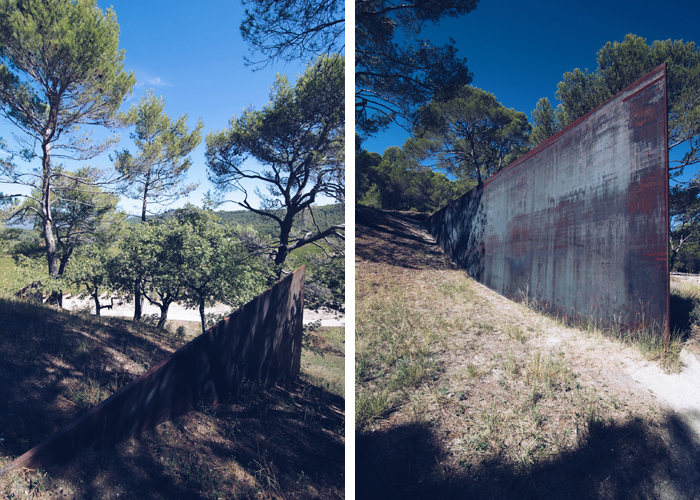
“Aix” by Richard Serra
This communion of art and nature has a feeling of déjà vu? If you followed my 2019 road-trip to Japan, this philosophy was already present on the islands of Naoshima (where Tadao Ando also worked) and I pleasantly found it in France at Château La Coste.
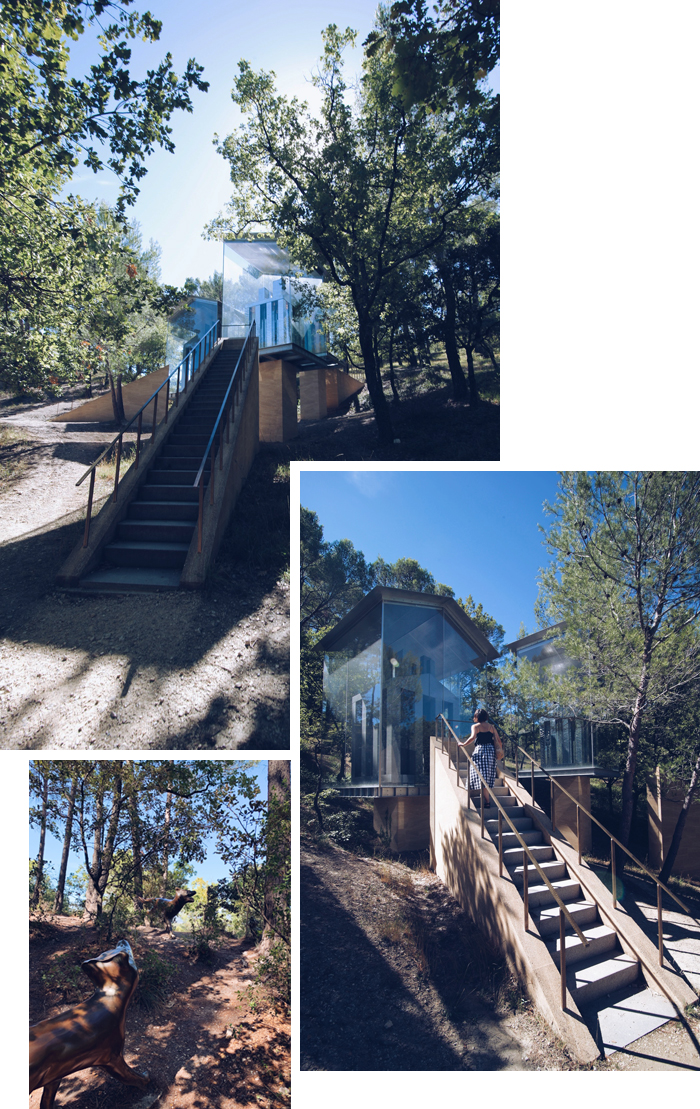
“Foxes” by Michael Stipe and “The marriage of New-York and Athen” by Frank Gehry et Tony Berlant
Everything has been thought out so as not to distort the original place and to sublimate it. This beautiful idea comes from an Irish businessman Patrick McKillen, art collector, who during a visit to Provence in 2004 with his sister, decided to buy a vineyard (in all simplicity, isn’t it?). He fell in love with Chateau La Coste at first sight and then had the idea of making it a place where people would meet to share the love of art, nature and good food (=I was the ideal target).
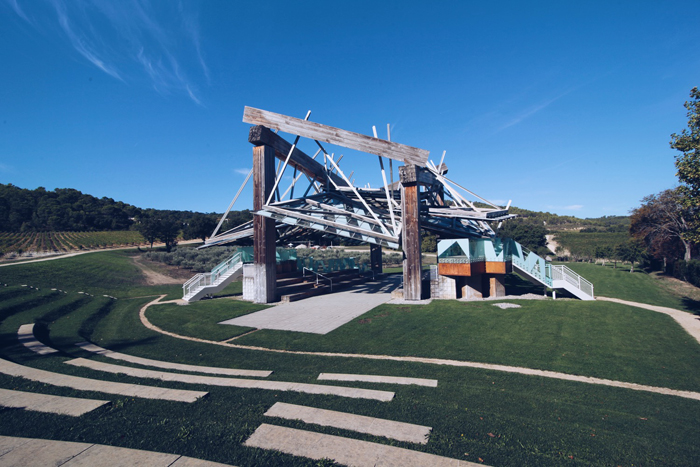
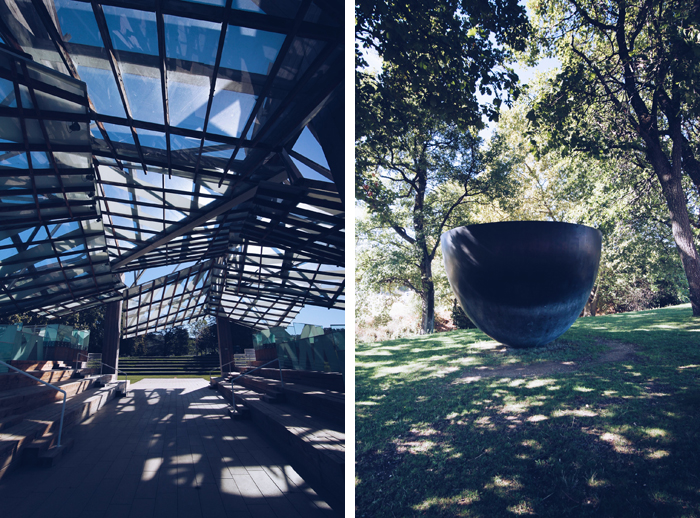
Music pavilion by Frank Gehry and “Calix Meus Inebrians” by Guggi
He then called upon artists he admired and/or was close to (Jean Nouvel, Frank Gehry, Louise Bourgeois…) to bring their personal touch, and in particular Tadao Ando to whom he entrusted the task of designing the main building intended to welcome the public. From then on, the estate was gradually filled with architectural touches, exhibitions and works of art, scattered among the vines and reliefs of the estate.
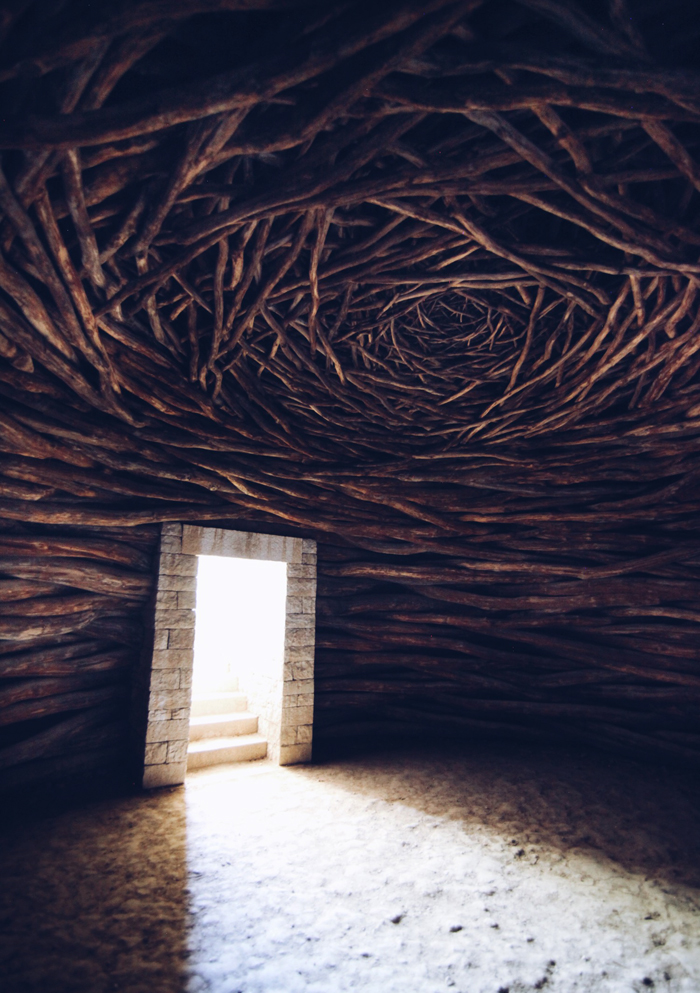
The incredible artwork by Andy Golsworthy “Oak room” made from intervowen oak trunks and branches
And here we are in 2022 with exhibition pavilions and more than 40 different pieces of artworks implanted within the vineyard.
THE ART & ARCHITECTURE TOUR
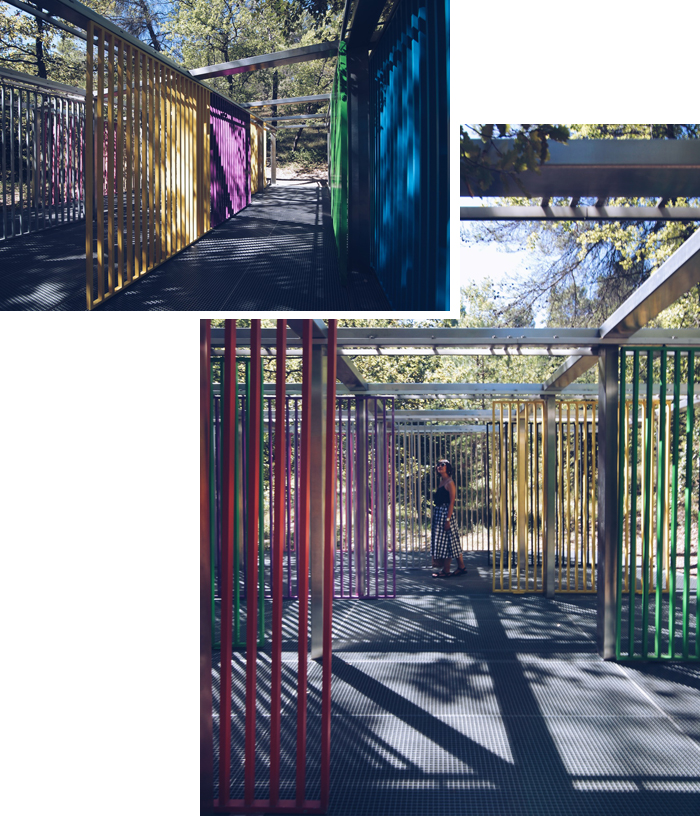
“Multiplied resistance screened” by Liam Gillick
A visit to Château La Coste is a real sensory journey (I could easily develop a Five senses article just talking about this place!) Even though you can go without planning, I think it is still useful to know a few things before scheduling this visit that involves the head, the legs as well as the stomach.
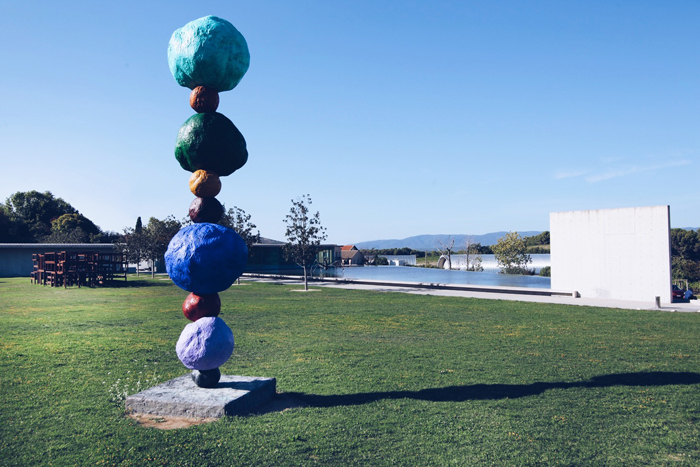
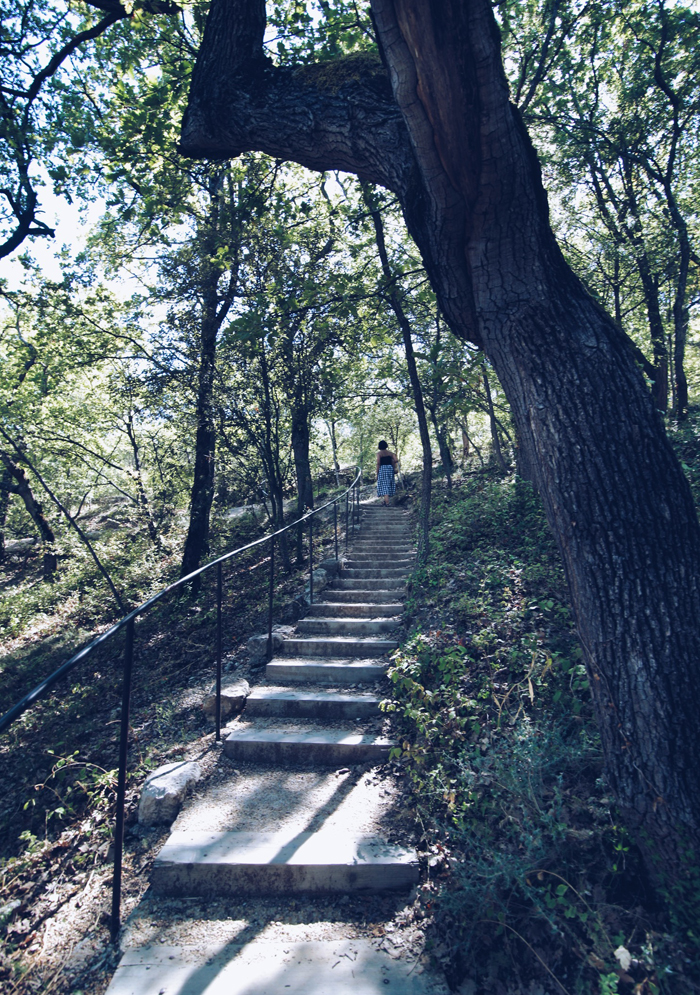
PREPARE THE VISIT :
- Keep an eye on the weather on the day of your visit : I admit I was shaky a few days before our visit since the weather forecast predicted showers and thunderstorms, but in the end, the day couldn’t have been more ideal for visiting this place: Sunshine and mild summer temperature. I don’t recommend a visit in rainy weather, unless you are really equipped, but it might be slippery in places and it might not be the best conditions to admire the outdoor installations.
- Dress appropriately : The route includes rough and stony paths through the vineyards: go for comfort. I noticed that the dress code on site is rather “casual chic” or “Styled-casual” so take care of your outfit by putting on comfortable shoes adapted to a moderate hike (we walked 13 km that day) while being presentable for a lunch on site (I did not see anyone picnicking and I’m not sure if it is allowed).
- The whole tour is supposed to last 2 hours “in theory”: We stayed there the whole day from 10am to 7pm (opening hours) (knowing that we take pictures and that I spend a lot of time thinking/dreaming/analyzing/admiring in front of a work of art and even more when it is located in this natural setting). Roughly, it takes 2 hours if you walk over the works without taking pictures. I would recommend splitting the tour in two (one half in the morning and the other in the afternoon) with a lunch break in a restaurant on the estate.
- There are no toilets or water supply points on the course: so remember to make arrangements when you arrive at the Tadao Ando Art Center (which is equipped with toilets) and bring a water bottle.
- Remember to reserve your restaurant in advance(for lunch and/or dinner): I will detail more below in the “restaurants” section.
- The route includes more or less shaded areas: : Bring sunscreen and a hat just in case.
- For people with reduced mobility (or not very athletic), you can book a tour that is done on small carts.
THE WORKS OF TADAO ANDO :
- THE ART CENTER : The main building or Art Center is impossible to miss when you arrive at the site.
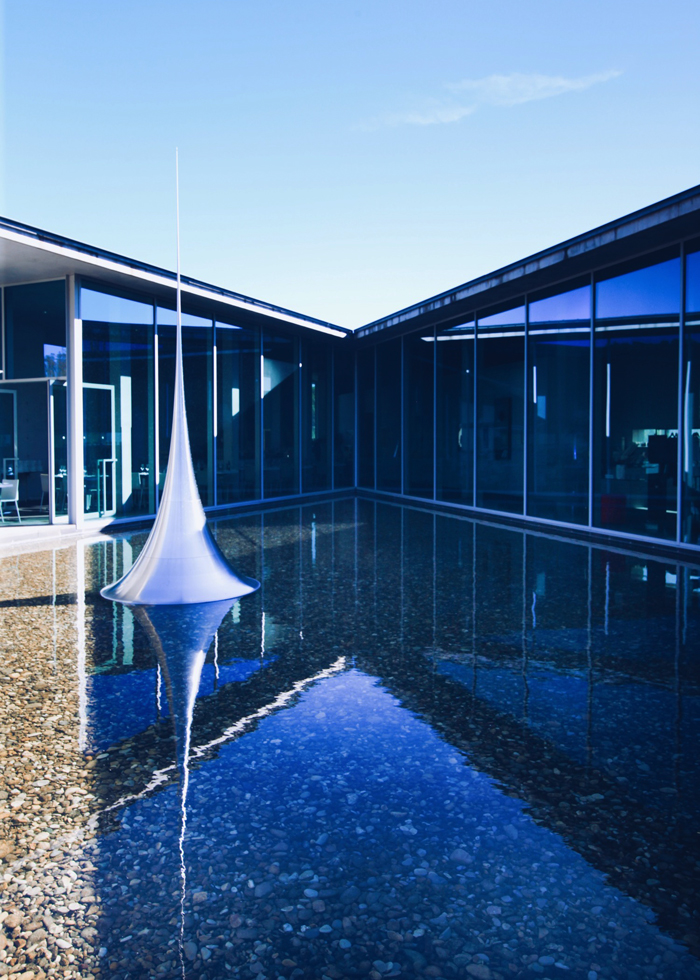
“Mathematical model 012” by Hiroshi Sujimoto in the art center designed by Tadao Ando
One immediately recognizes the style of the Japanese architect who had the genius to install the parking lot under the water, which, on the one hand, does not distort the visual aesthetics of the place by hiding the cars from the scenery, but on the other hand, allows an immersive entry into the place, when one climbs the stairs of the parking lot to access the upper level.
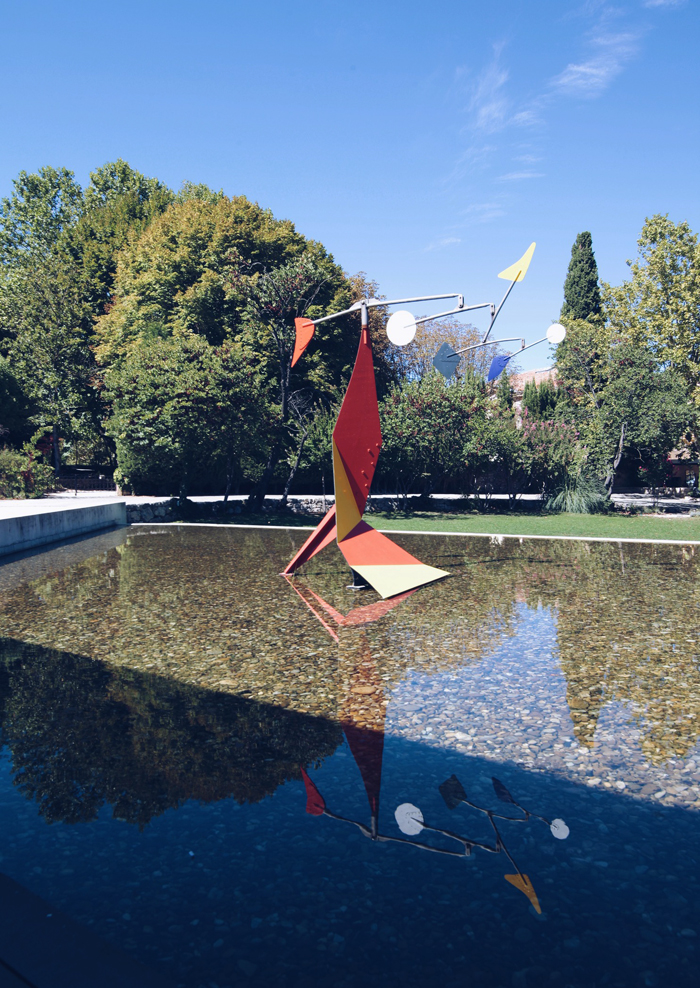
“Small Crinkly”de Alexander Calder
This art center includes a store (well stocked with art and architecture books), toilets, a restaurant and 3 artworks integrated into the place: “Crouching Spider” by Louise Bourgeois, “Small crinkly” by Alexander Calder and “Mathematical model 012” by Hiroshi Sujimoto) You can recognize the signature elements of Tadao Ando: large concrete walls, openings that let the light through and the notion of infinity. I’m still a fan.
- THE CHAPEL : It overlooks the valley and requires some effort to get there. The ruins of an old chapel have been restored and Tadao Ando decided to enclose them in a glass and metal case, highlighting this witness of the past as well as the surrounding landscape. When you close the door of the stone chapel, natural light streams over it like a fascinating divine halo. Outside the chapel, a large red cross by French artist Jean-Michel Othoniel contrasts with the austerity of the concrete.
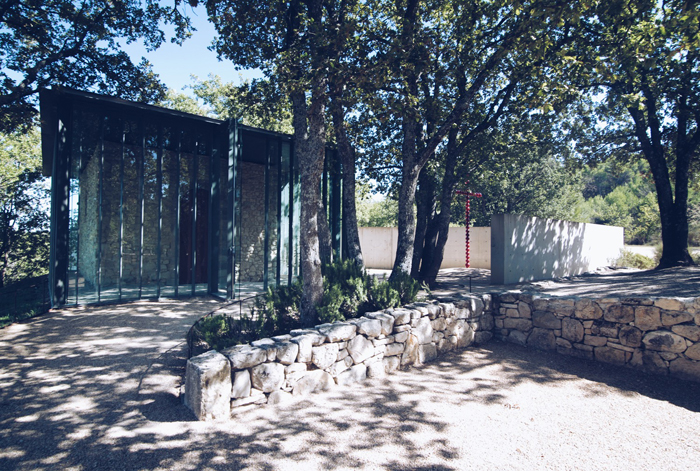
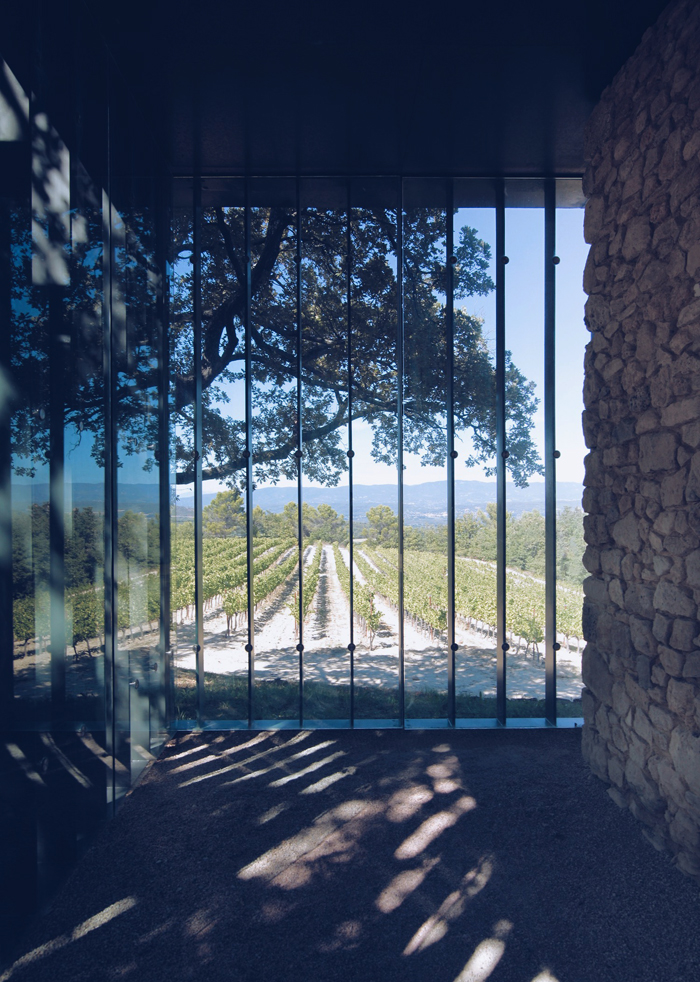
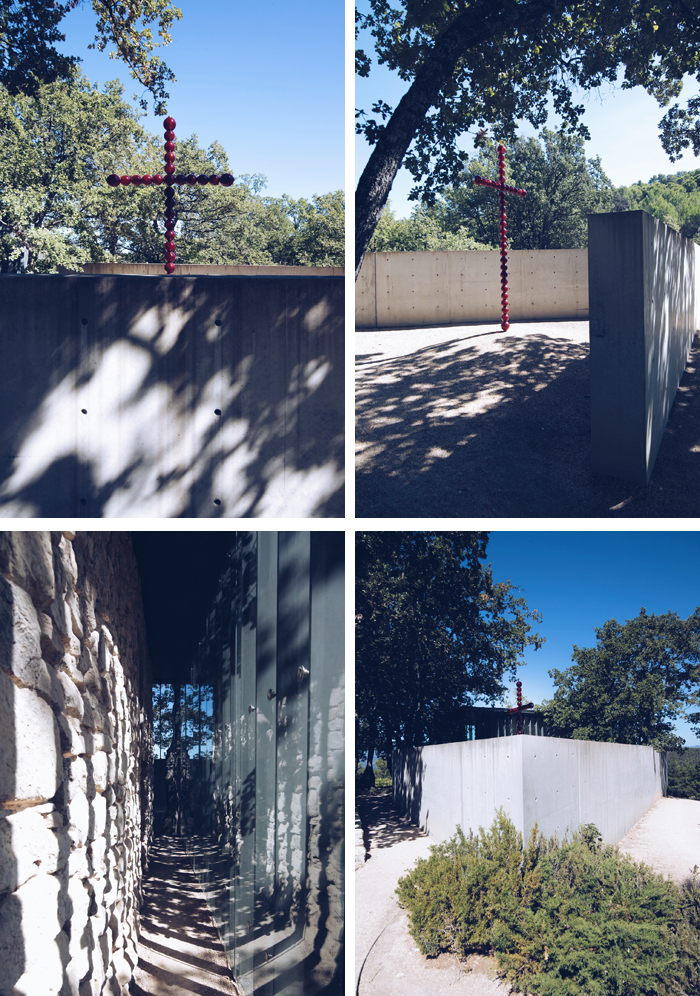
The Tadao Ando chapel and La Grande croix rouge by Jean-Michel Othoniel
- PAVILION “FOUR CUBES TO CONTEMPLATE OUR ENVIRONMENT” : For once, Tadao Ando has designed this wooden work: it contains 4 glass cubes underlining the environmental problems and allowing to push its reflection on the future of Man on Earth. Powerful and effective.
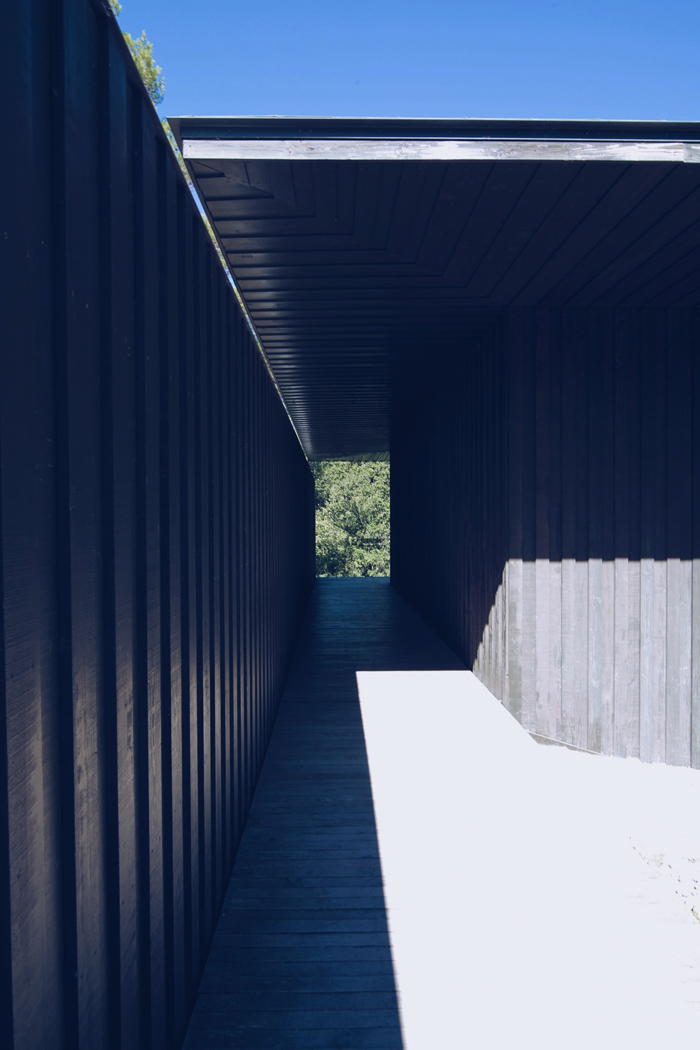
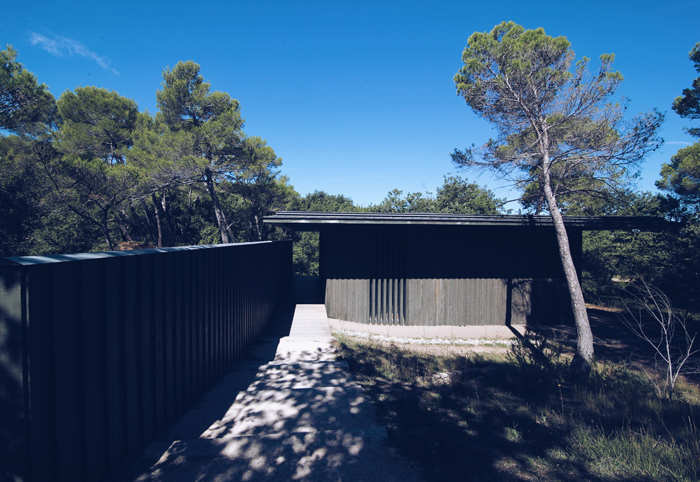
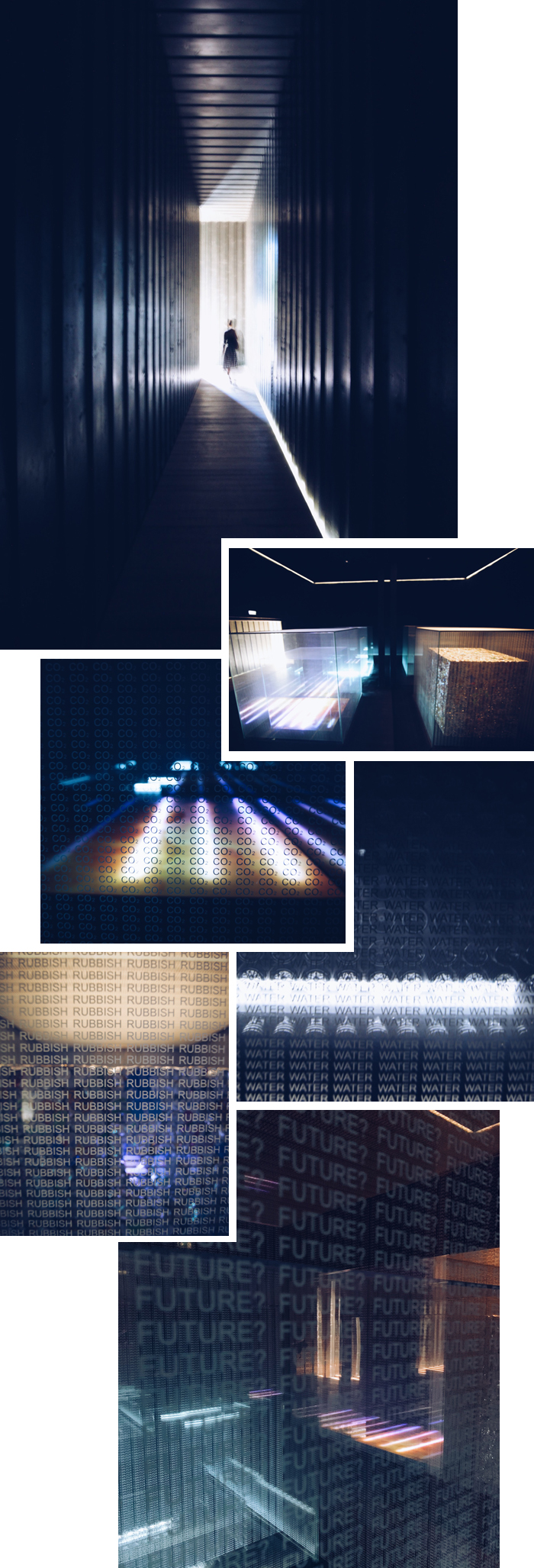
“Four cubes to contemplate our environment” by Tadao Ando
- ORIGAMI BENCHES : 2 benches inspired by origami folding are located on the course, at strategic places to admire the view or a work. The play with light and nature is once again part of the game.
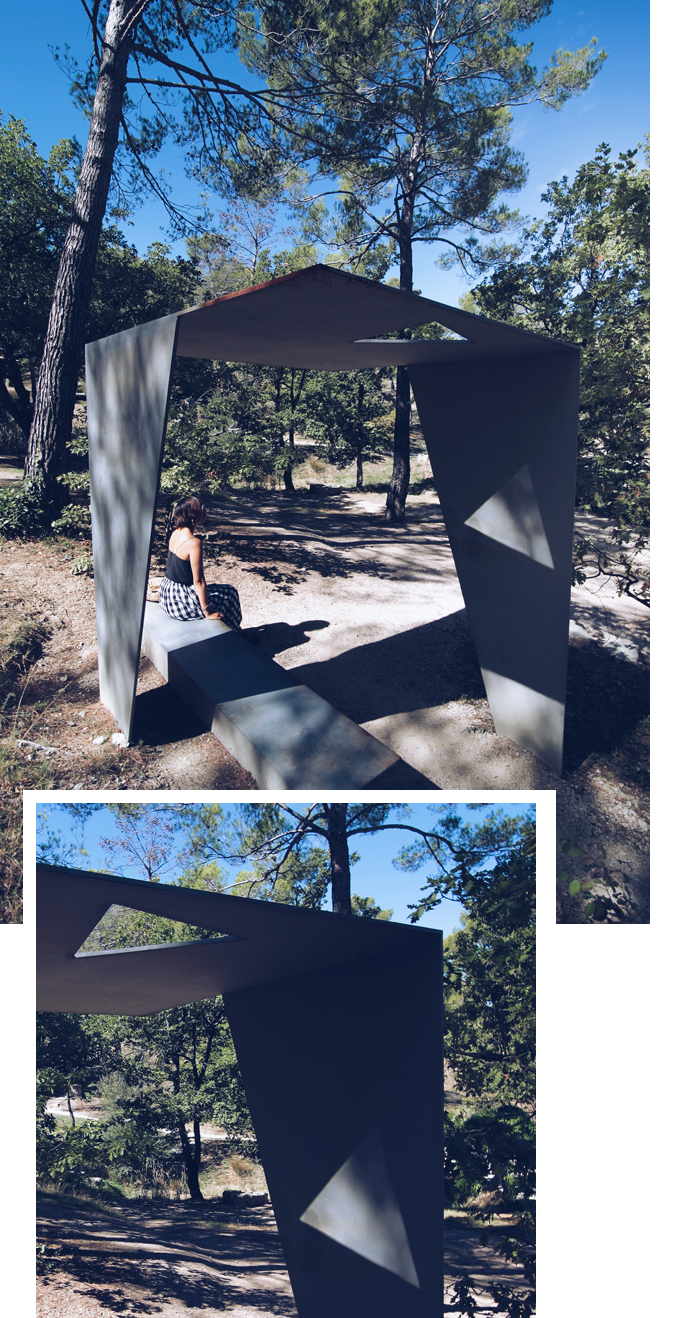
Banc origami by Tadao Ando
THE OTHER ARTISTS :
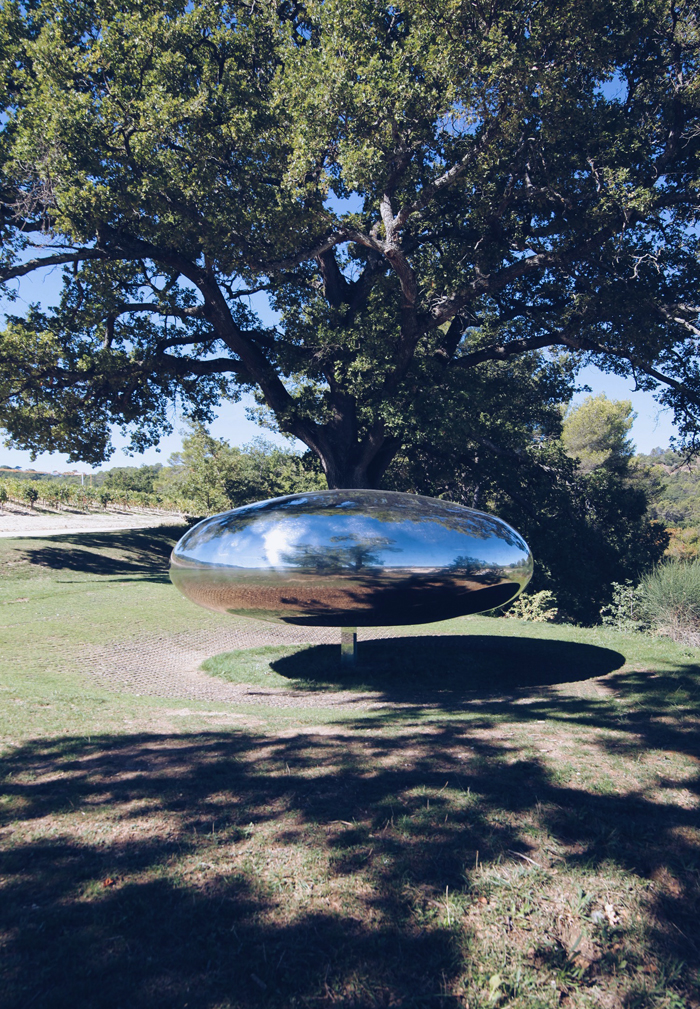
“Drop” by Tom Shannon
I won’t go into detail about each work admired since, as I said above, there are more than 40 of them, but I will insist on a few that I found particularly interesting, that made me react or pushed me to think, but overall, I appreciated everything. It is worth noting that each artist had the freedom to choose the location of the domain where to set up his work, which makes the interpretation of each creation even more personal.
I was very pleased to find a spider “Crouching spider” by Louise Bourgeois (a specimen I also admired in the 2017 Women house exhibition). This maternal metaphor, both protective and frightening, takes on another dimension, reflected in this water body, cleverly imagined by Tadao Ando.
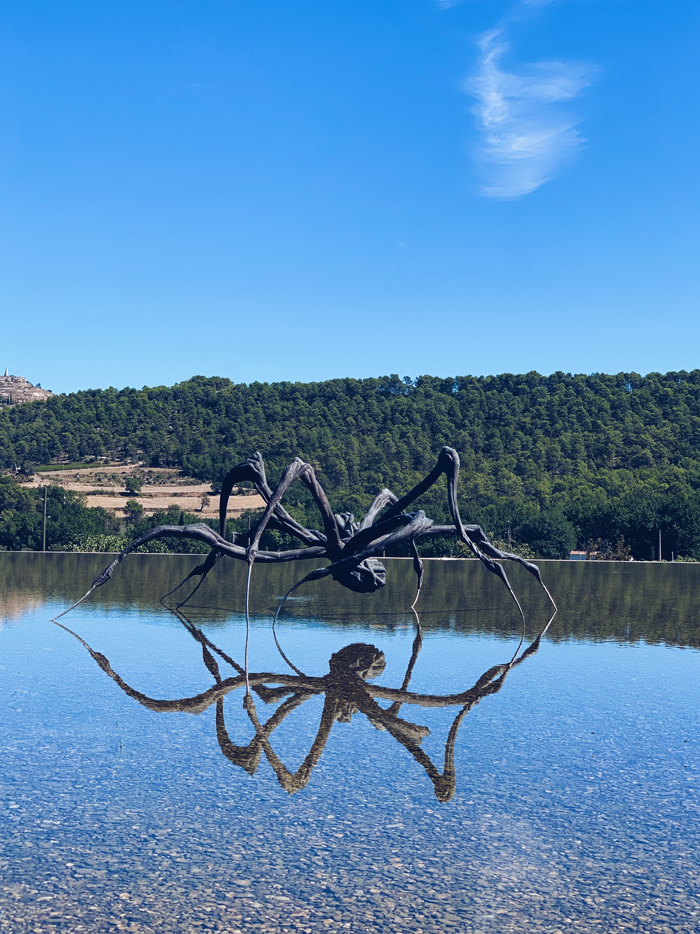
“Crouching spider” de Louise Bourgeois
I was also able to find another work by another Japanese architect on the tour: Kengo Kuma (whose work I also like but who had disappointed me a little at the Albert Kahn museum). He is renowned for his very graphic constructions based on wood. Here, he wanted to reinterpret the notion of Komorebi, a Japanese term that poetically designates the light that passes between the trees.
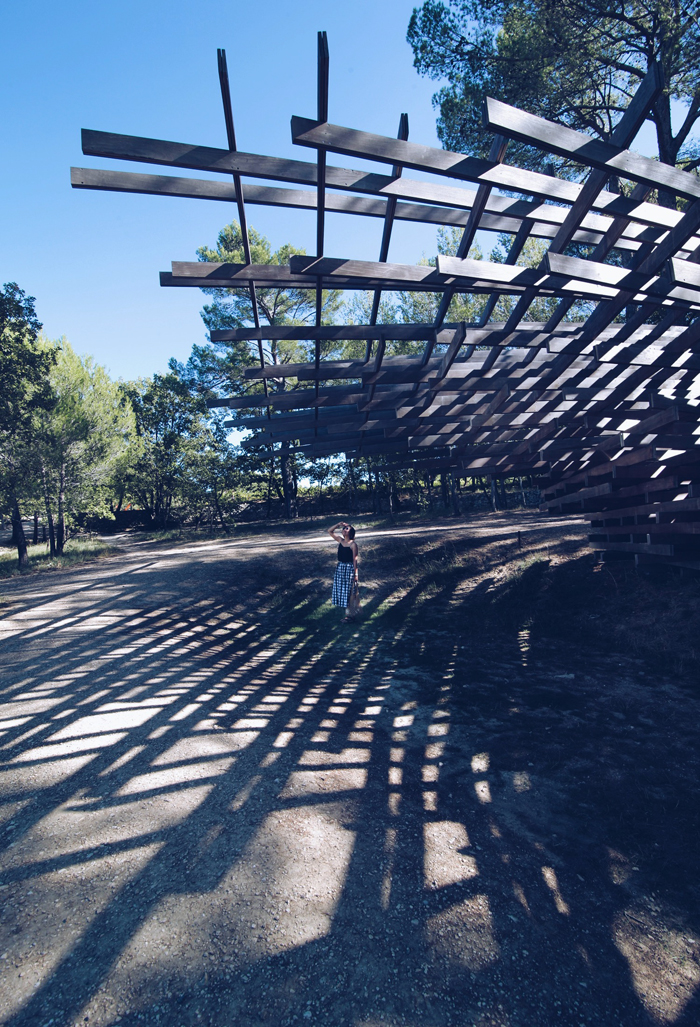
“Komorebi” by Kengo Kuma
Sophie Calle, known for her interactive and personal artworks, has deliberately installed a burial ground at the end of an isolated path, between the trees. We will appreciate the word play of the name of the work: “Dead end”
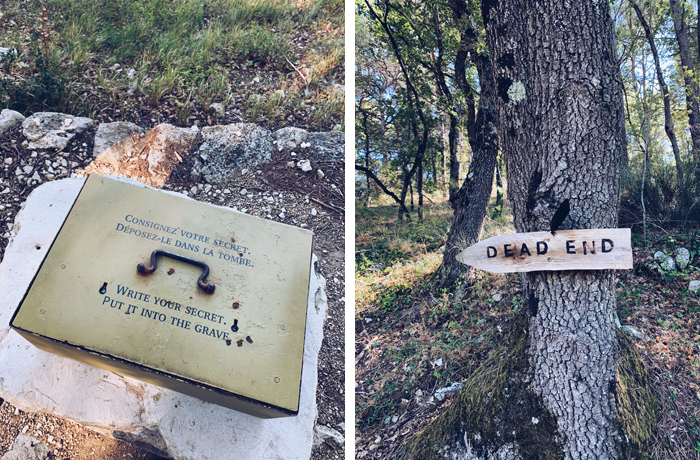
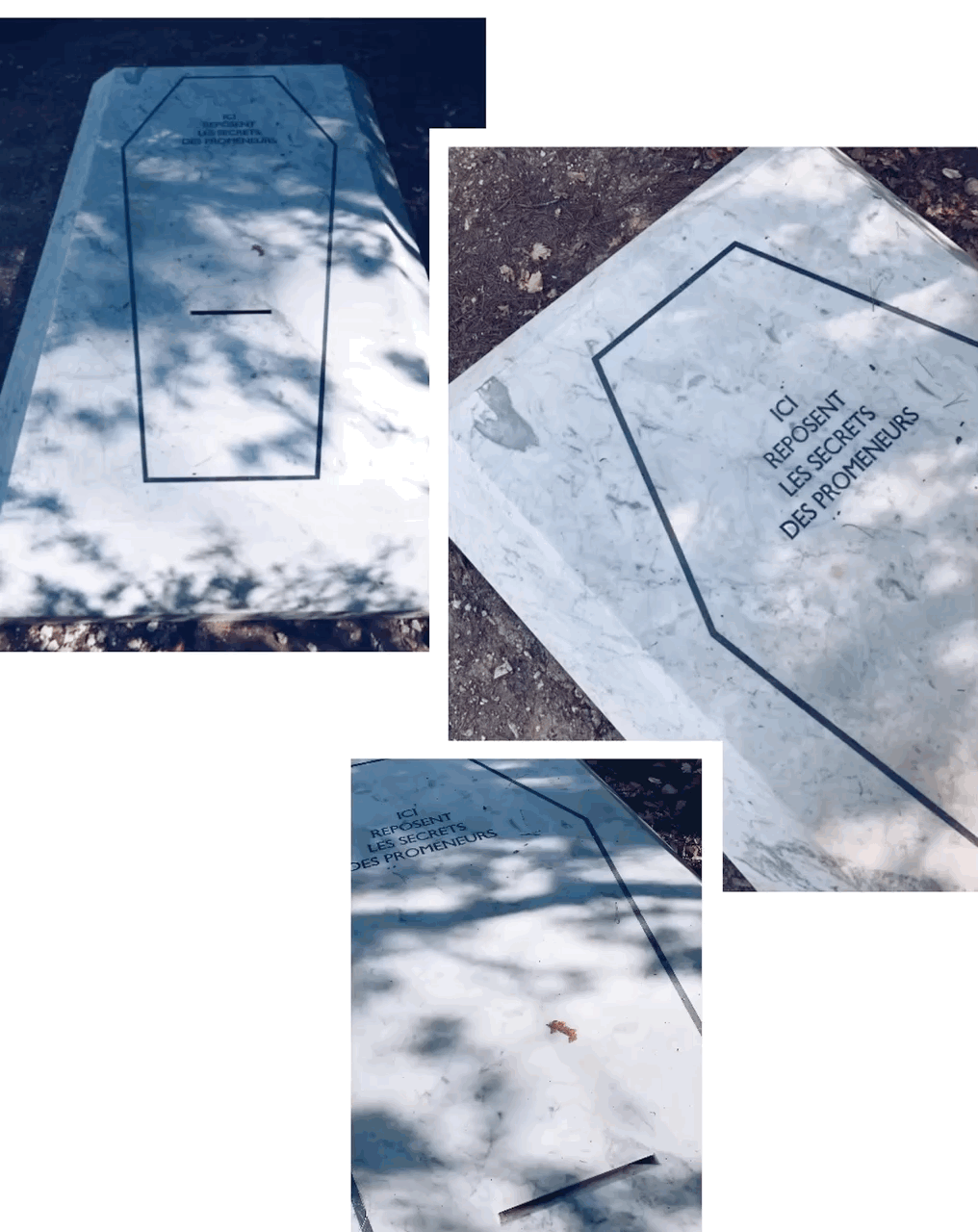
“Dead end” by Sophie Calle
It invites you to leave a paper containing an unspoken secret. So I did it and slipped my secret into the crack of the grave: “Here lie the secrets of the walkers”. She had already experimented with this enclosure of secrets in previous performances, in Brittany, Geneva and New York.
I also particularly appreciated the architecture of the different exhibition galleries: the curved pavilion by Oscar Niemeyer (housing an exhibition by the artist Anna Morris)…
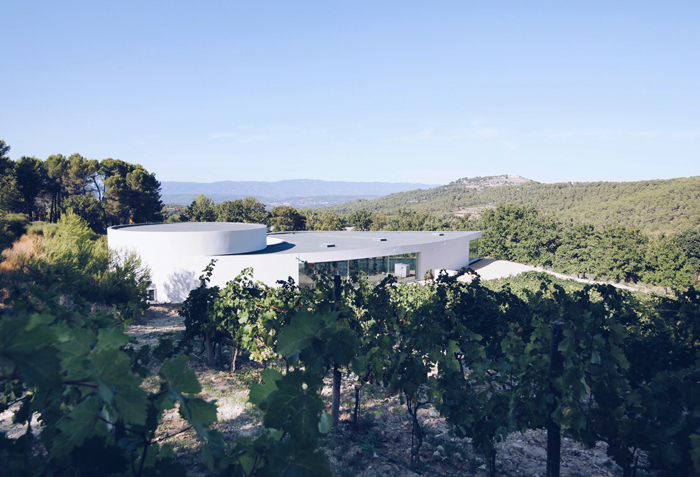
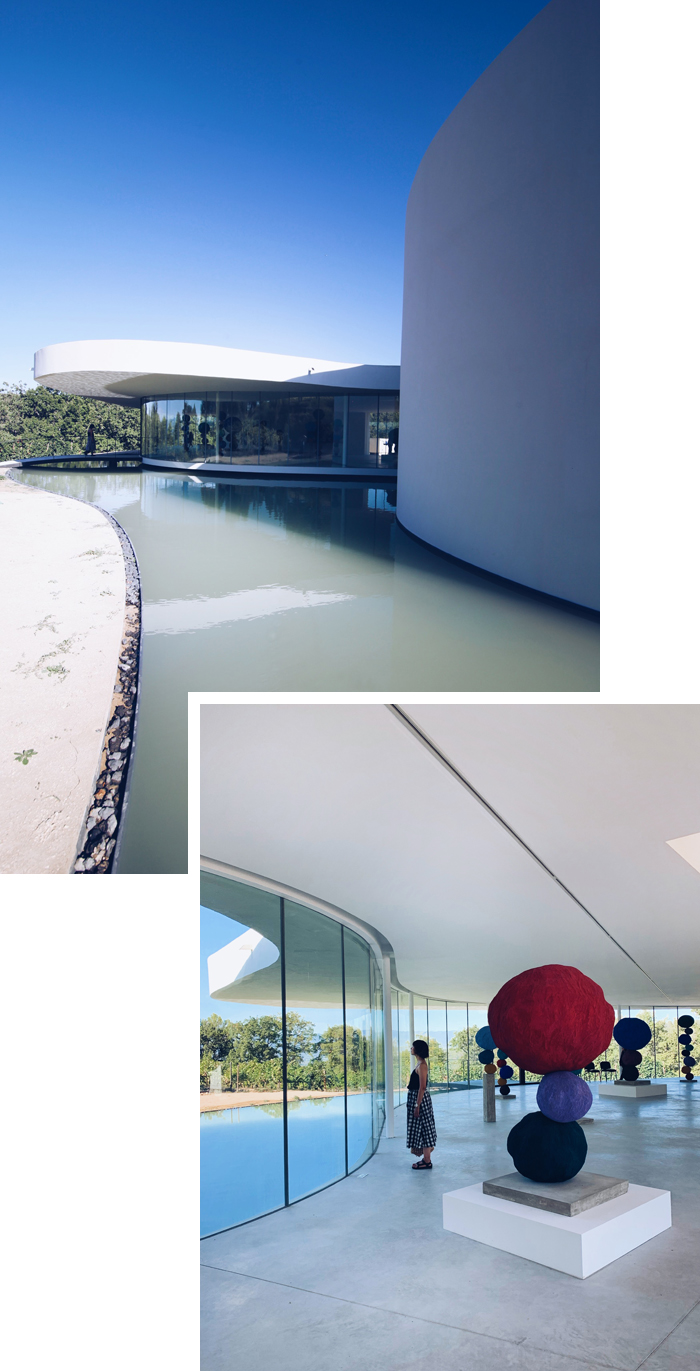
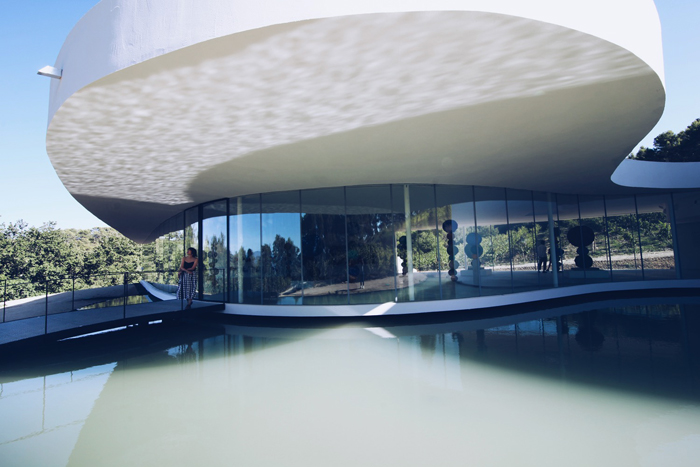
Oscar Niemeyer pavilion hosting the Anna Morris exhibition
…the high pavilion by Richard Rogers (which reminds the architecture of the Centre Pompidou, which he also designed with Renzo Piano) perfect for admiring the view (housing a colorful exhibition by Idris Khan)
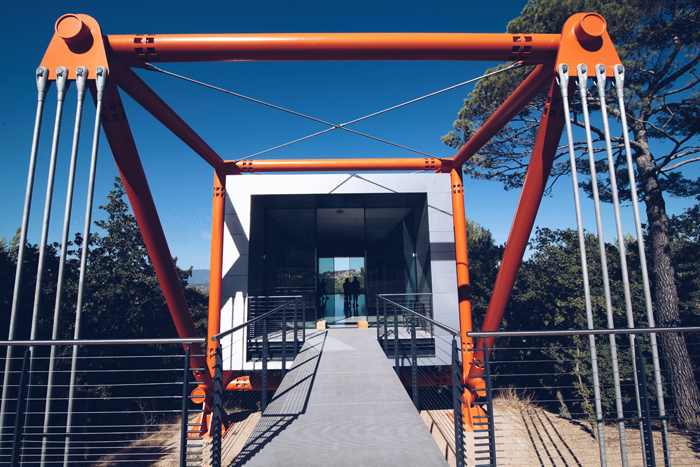
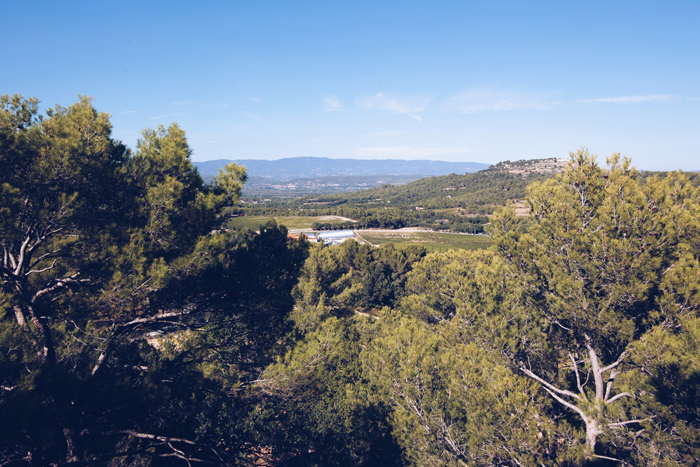
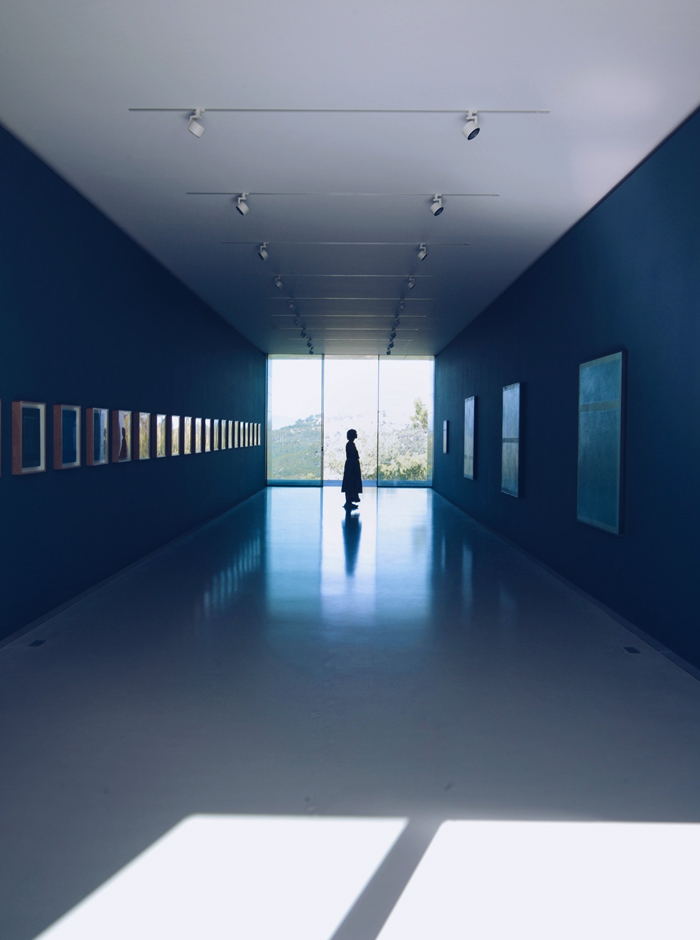
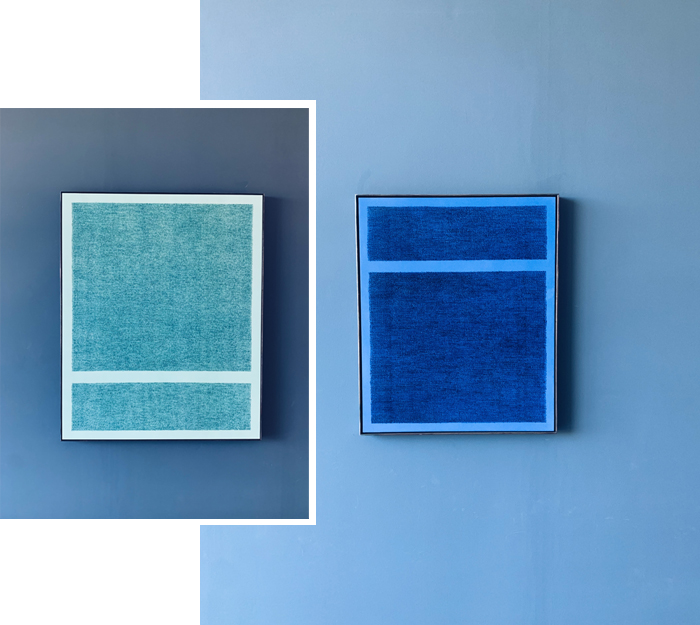
Idris Khan exhibition in Frank Rogers gallery
…as well as the pavilion by Renzo Piano (where the exhibition of Bob Dylan was located)
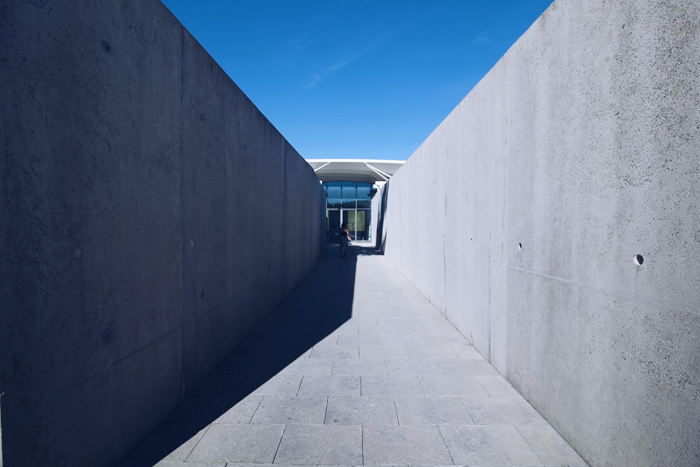
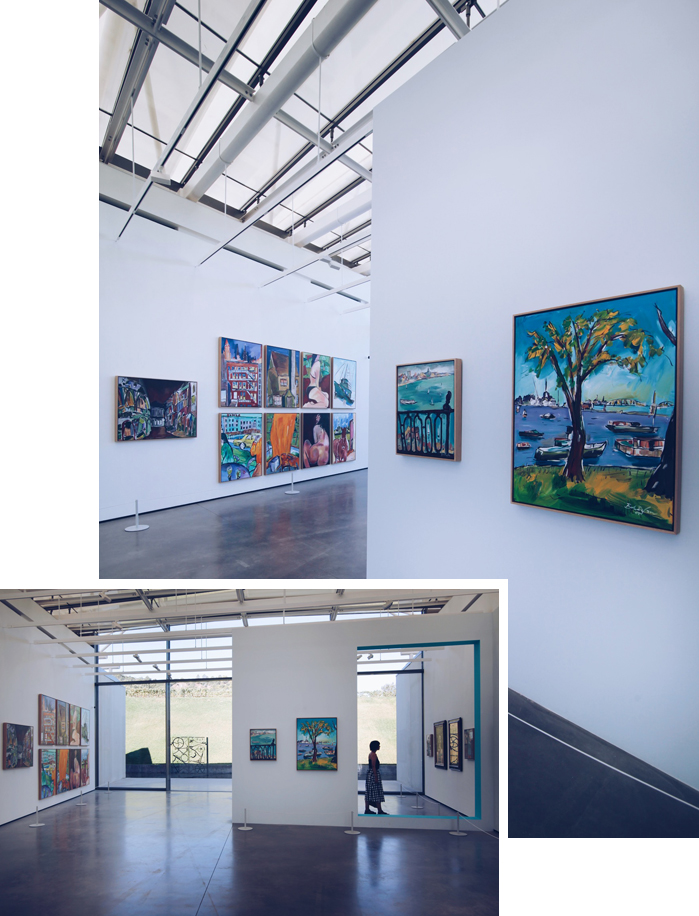
Bob Dylan artwork for his “Drawn black in Provence” exhibition stands alonde with Henri Matisse, Claude Monet,
Camille Pissarro et Marc Chagall artworks
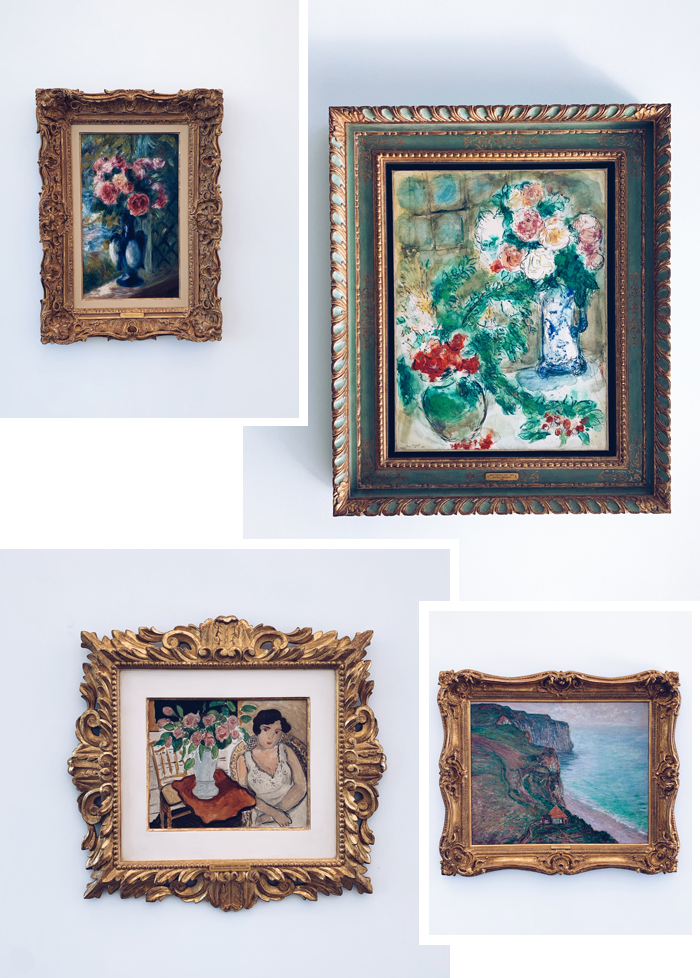
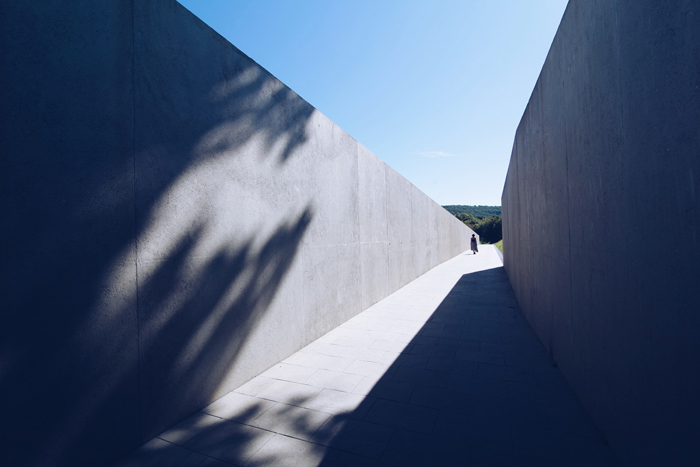
Renzo Piano pavilion
I also really liked the photo exhibition “Moment of affection” of Mary Mc Cartney (Paul and Linda Mc Cartney’s daughter) full of sensitivity and sweetness.
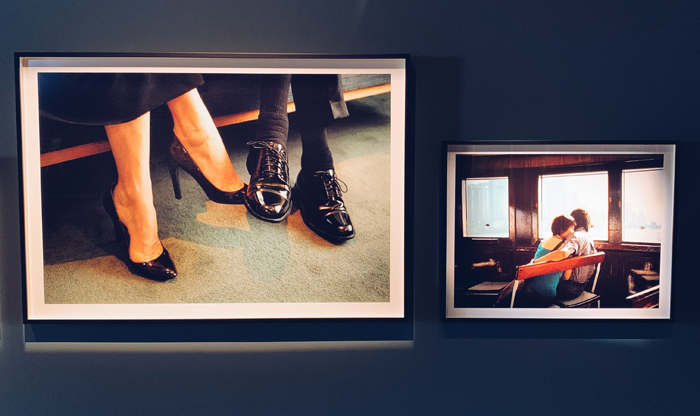
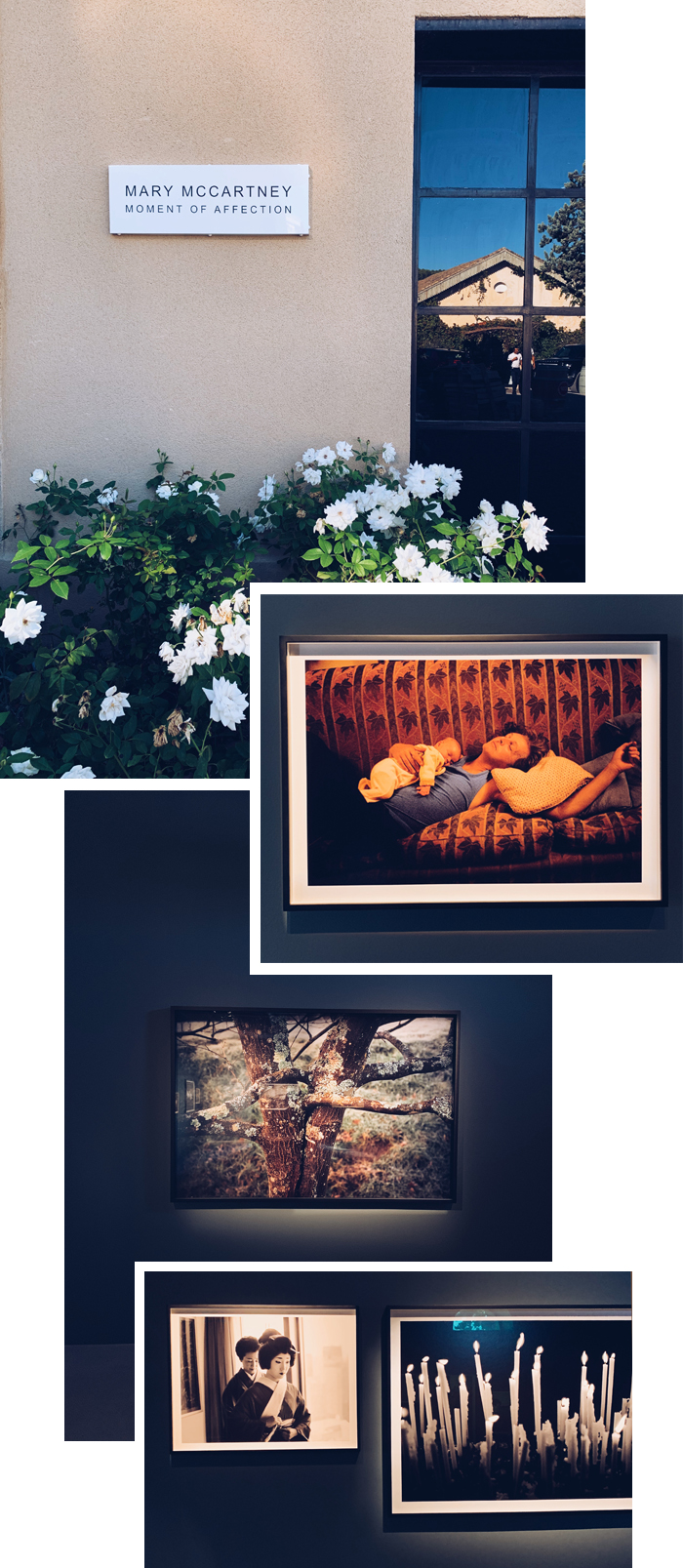
L’exposition “Moment of affection” de Mary Mc Cartney
Here is a small selection of the installations present on the site to give you an idea of the variety of works.
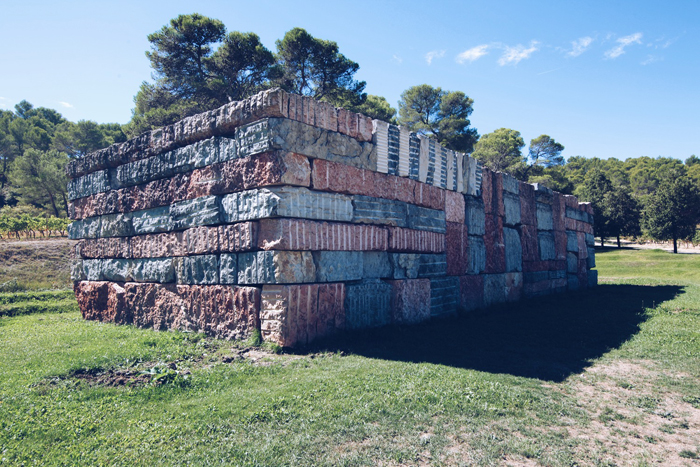
“Wall of light cubed” by Sean Scully
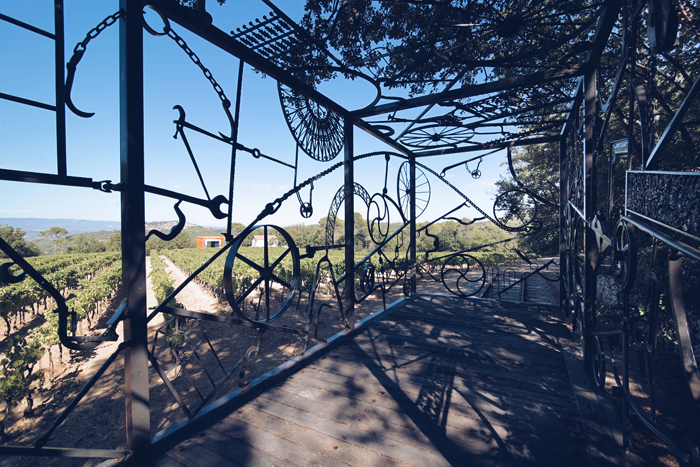
“Rail car” by Bob Dylan
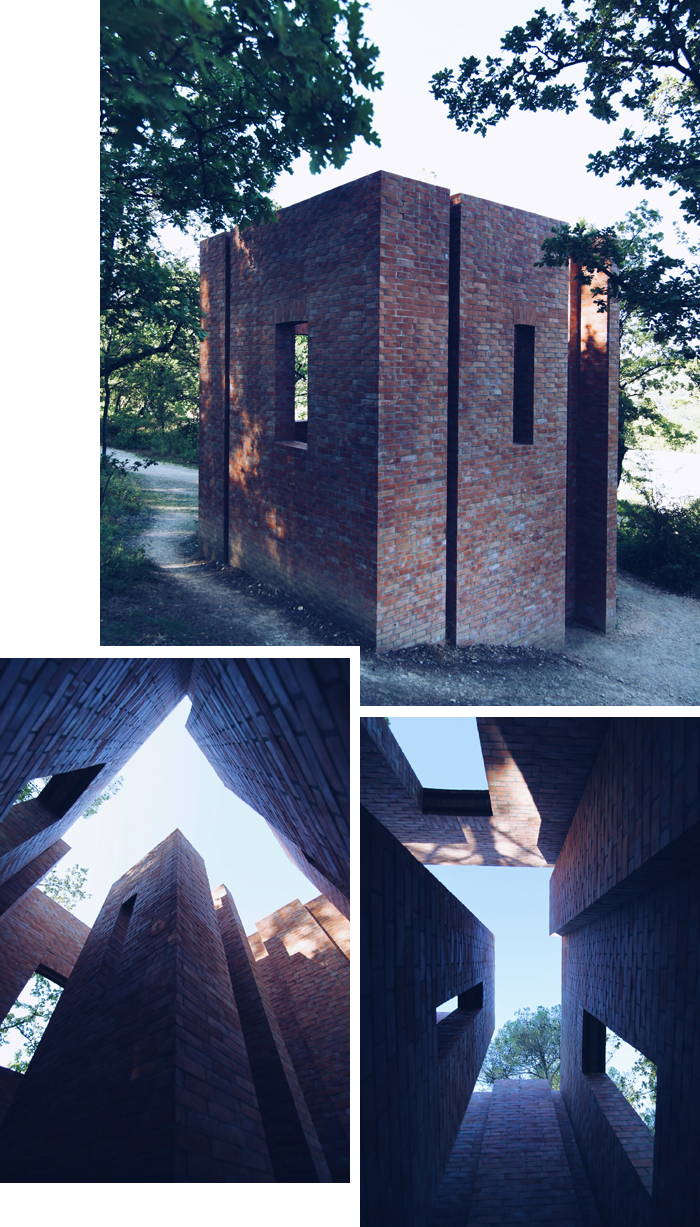
“Labyrinth”by Per Kirkeby
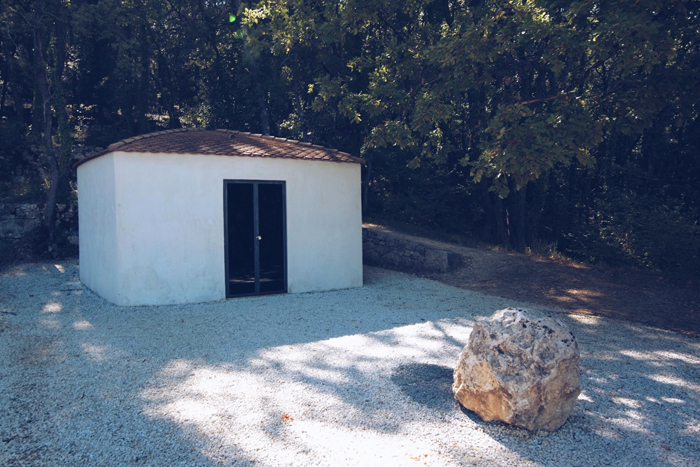
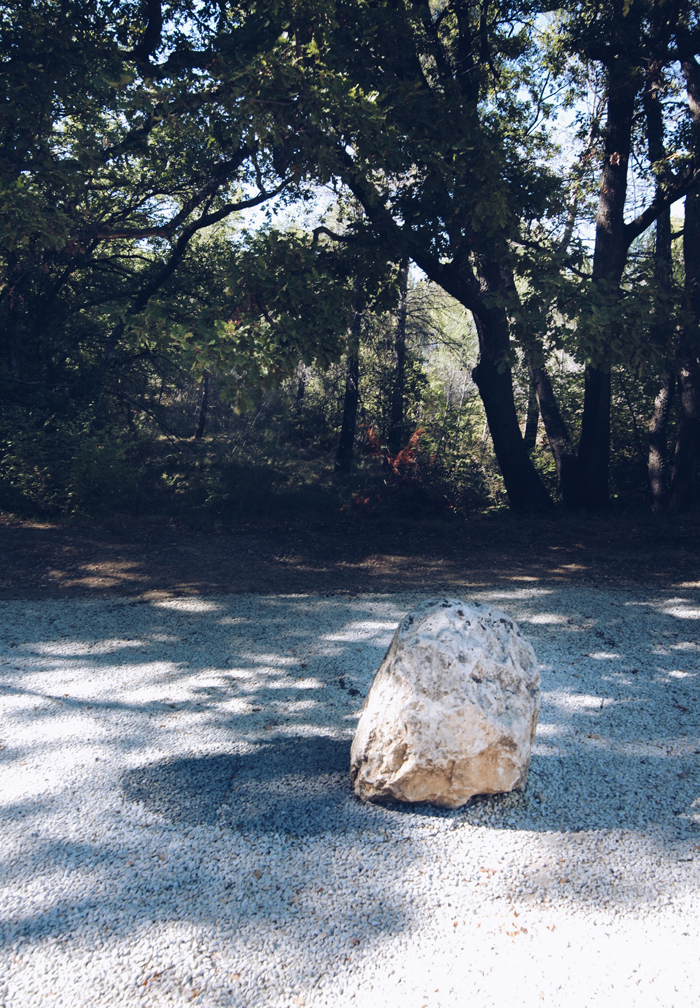
“House of air” by Lee ufan (the shadow in the front of the rock is a trompe-l’oeil)
THE RESTAURANTS OF CHÂTEAU LA COSTE
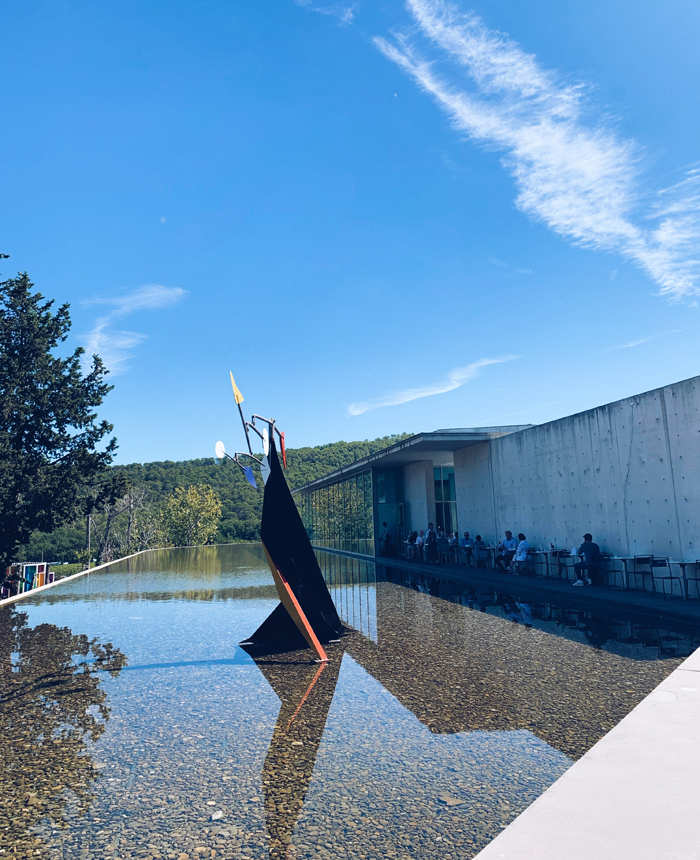
Restaurant Tadao Ando
Feeding your mind is good, but satisfying your taste buds is even better. When I learned that this domain was not only dedicated to art but also to gastronomy, I wanted to make the most of this day. The place has 5 restaurants (4 in the Chateau la Coste estate and the last one, located at Villa La coste, the hotel complex on the edge).
Since we had to make a choice for our day of visit, we turned to the Tadao Ando restaurant (for lunch) and wanted to indulge ourselves with the chef Hélène Darroze‘s restaurant in the evening. Having said that, all the restaurants are appealing! Here are the main characteristics of each one, which will help you make your choice:
- The TADAO ANDO restaurant :(from 10am to 7pm with lunch service) The ideal place to admire the architecture of the art center and to taste simple but refined dishes, respecting the seasonal products (as you can see below on my pictures)
- LA TERRASSE :(from 10am to 7:30pm : no reservation required) offers typical Provencal dishes (onion tart, plates to share…)
- The FRANCIS MALLMAN restaurant : (Dinner every night and lunch only on weekends) A cuisine offering grilled meats, empanadas and other Argentine specialties.
- The VANINA restaurant :(Lunch and dinner every day) Pizza, antipasti, pasta are made with fresh and organic products.
- The HÉLÈNE DARROZE’s restaurant : (3 or 5 course menus at lunch and 5 or 7 course menus at dinner) Gastronomic meals in a sophisticated and warm setting.
The lunch at restaurant Tadao Ando The lunch at the Tadao Ando restaurant was quite simple. The products are fresh, it’s pretty good but not exceptional (the Pavlova was missing a little detail to be perfect hehe).
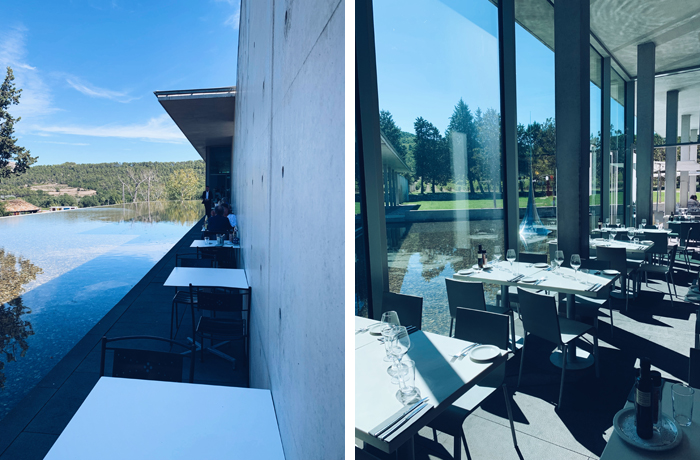
But the setting was really nice and soothing, facing the watering hole and the Alexander Calder mobile. That said, the olive oil that accompanied us throughout the meal was delicious, which prompted me to buy a bottle as a souvenir.
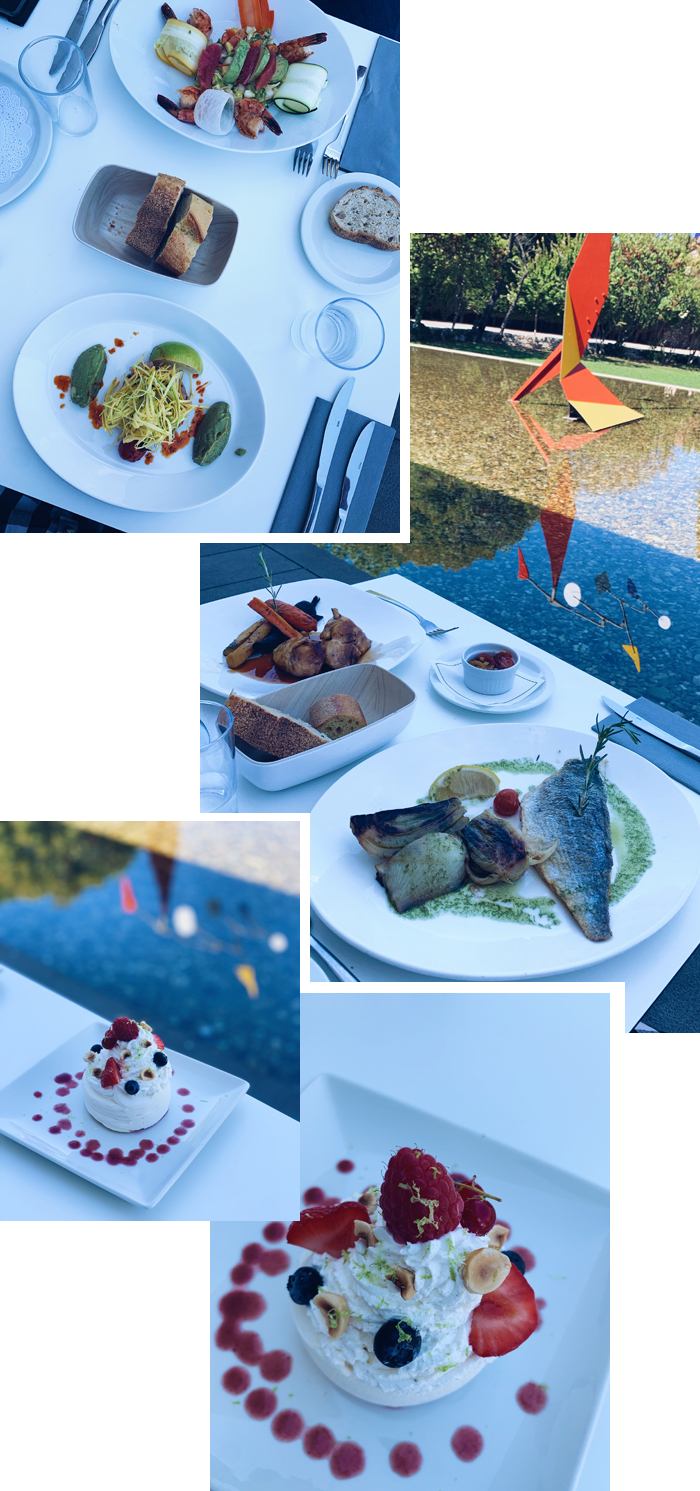
As for the dinner at Hélène Darroze restaurant, it was amazing from start o finish.
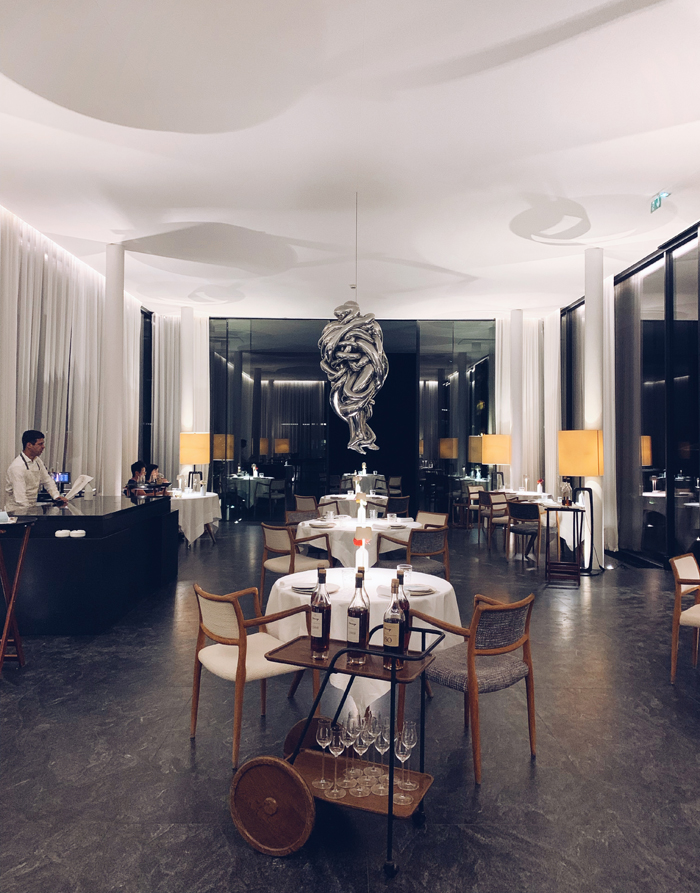
I chose the 7-course menu and my SO wasmore reasonable with 5-course. We enjoyed these multiple variations on the theme of local vegetables and fruits. Big crush on the field tomatoes.
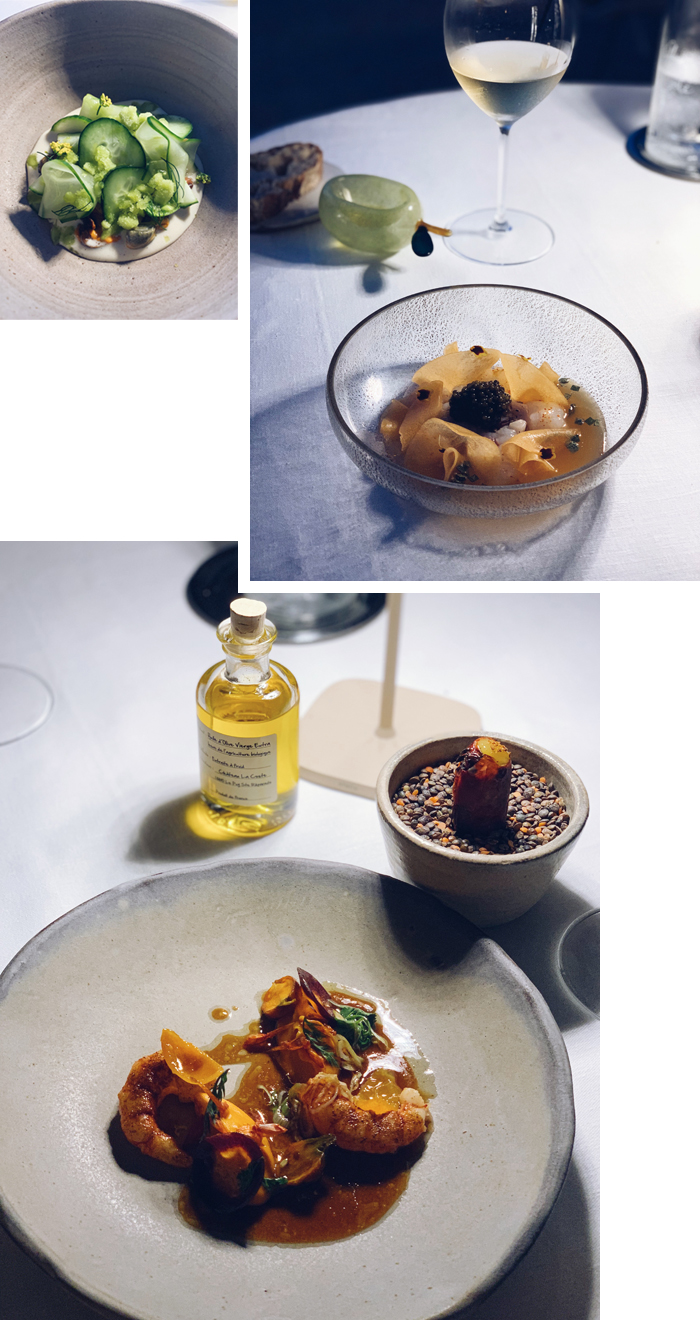
Carrot from the garden of Château La Coste preserved with citrus fruits, roasted San Remo gamberoni with tandoori spices, spring onion and fresh coriander
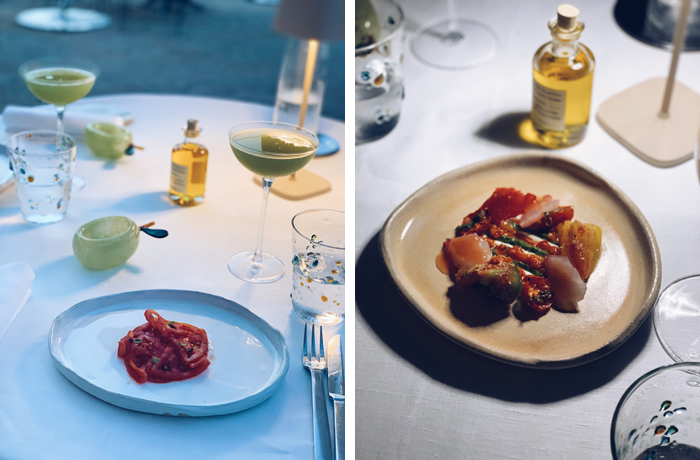
Amuse-bouche and Tomate Plein Champs from Cabanon San Peyre in Peyrolles, candied datterino coulis, verbena pesto, fresh goat cheese, thin slices of muge from Grau-du-roi, fermented tomato water jelly
As a dessert the baba à l’Armagnac, signature dish from the chef was light and tasty : Absolutely divine. During the meal, a wild fox came to say hello a few meters from our table : Wonderful from start to finish !
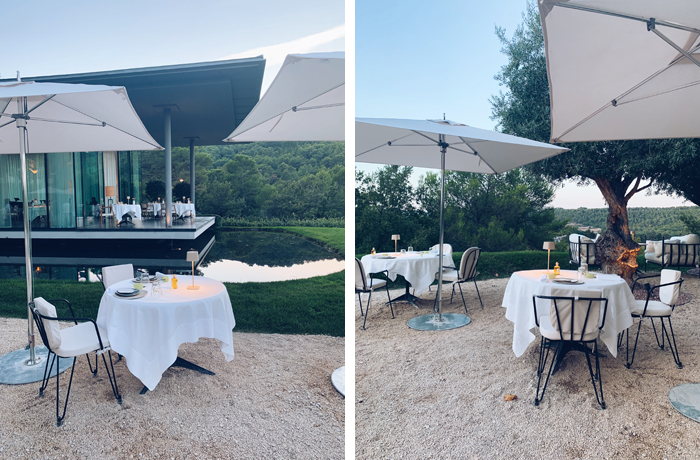
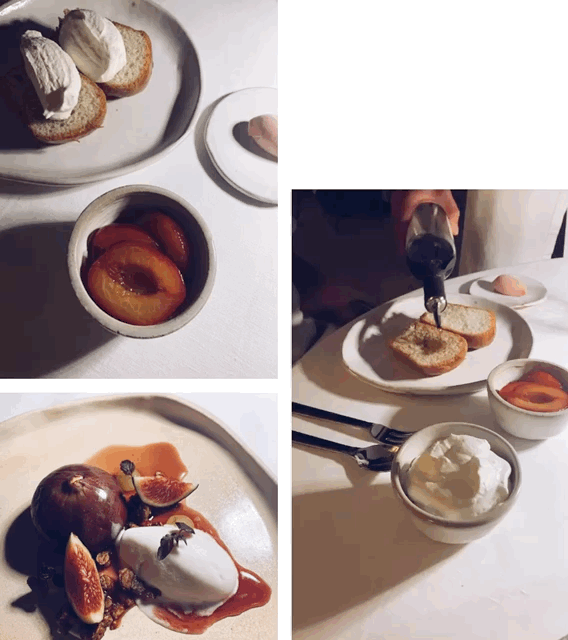
Patrick Blancon’s fig in Solliès cooked in its own juice and baba with Armagnac, Hélène Darroze’s signature dessert
In any case, I advise you to reserve your table in advance in the restaurant of your choice. If I have the opportunity to come back one day, I would try the Argentinian and Italian restaurants which look warm and appetizing.
STAYING AT VILLA LA COSTE
I can’t give you any more information about this, knowing that the price of a night is roughly equivalent to that of a return flight from Paris to Tokyo, but having been able to enter the residence (the restaurant of the chef Hélène Darroze is located in the heart of the Villa La Coste, on the edge of the art trail), we can notice that refinement and design are an integral part of the Villa, not to mention the service, which must be very neat (well, I hope so!)
It must be a fabulous experience to stay in this exceptional hotel complex (the light and the design of the suites, with their refined but warm design, look sumptuous). We’ll see if I decide to invest in a stay at Villa La Coste one day (by selling one or two kidneys^^) but for now, I’m fully satisfied with my visit to the estate as well as the exceptional dinner I was able to enjoy!
IN SUMMARY
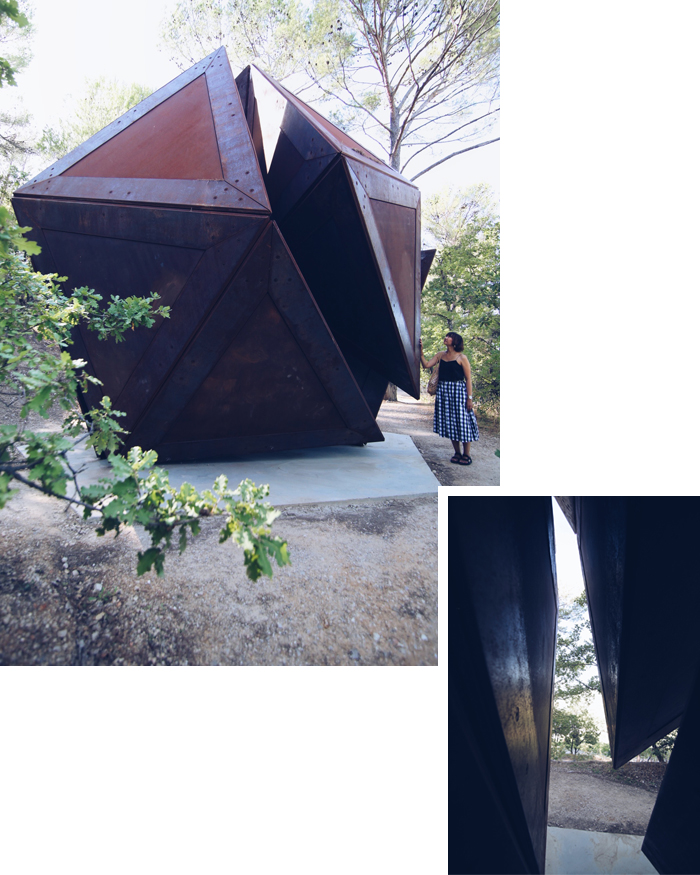
“Schism” by Conrad Shawcross
This day spent at Château La Coste was one of the richest and most enjoyable of my vacation. I really felt like I was in an amusement park dedicated to beauty and art in all its forms. Ending the day with a wonderful meal was the icing on the cake.
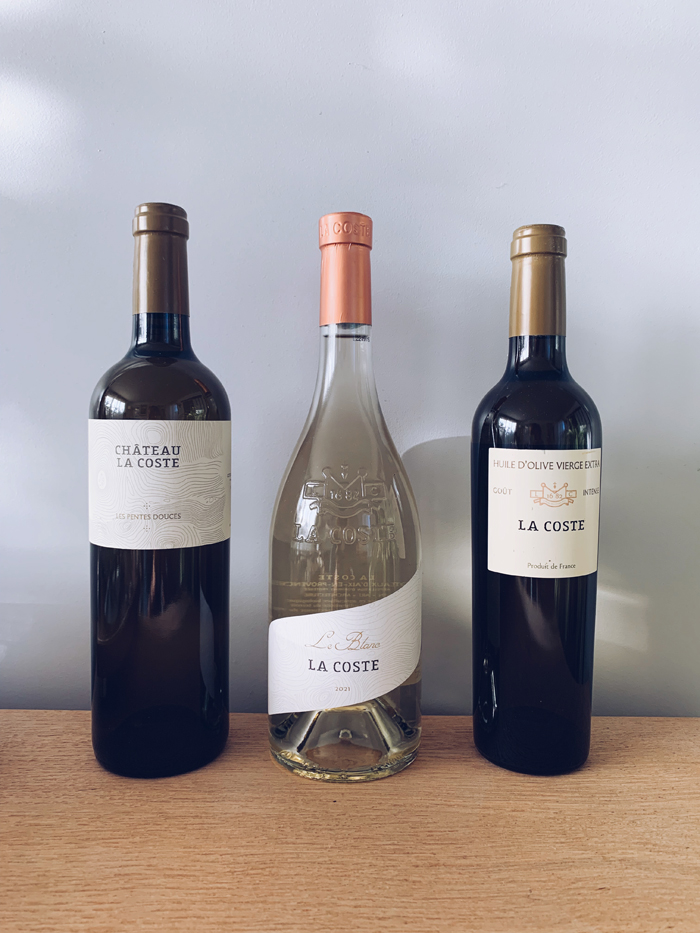
Wine and olive oil Château La Coste
I thought to bring back some souvenirs of my visit: Bottles of wine from the estate (to share with future guests rather than for myself, as I have a low tolerance for alcohol), a bottle of olive oil produced in Le Puy Sainte Réparade and a book on the work of Tadao Ando at Château La Coste (I highly recommend it if you want to know more about the construction process, his intentions for each work with drawings and explanatory models: just really nice! )
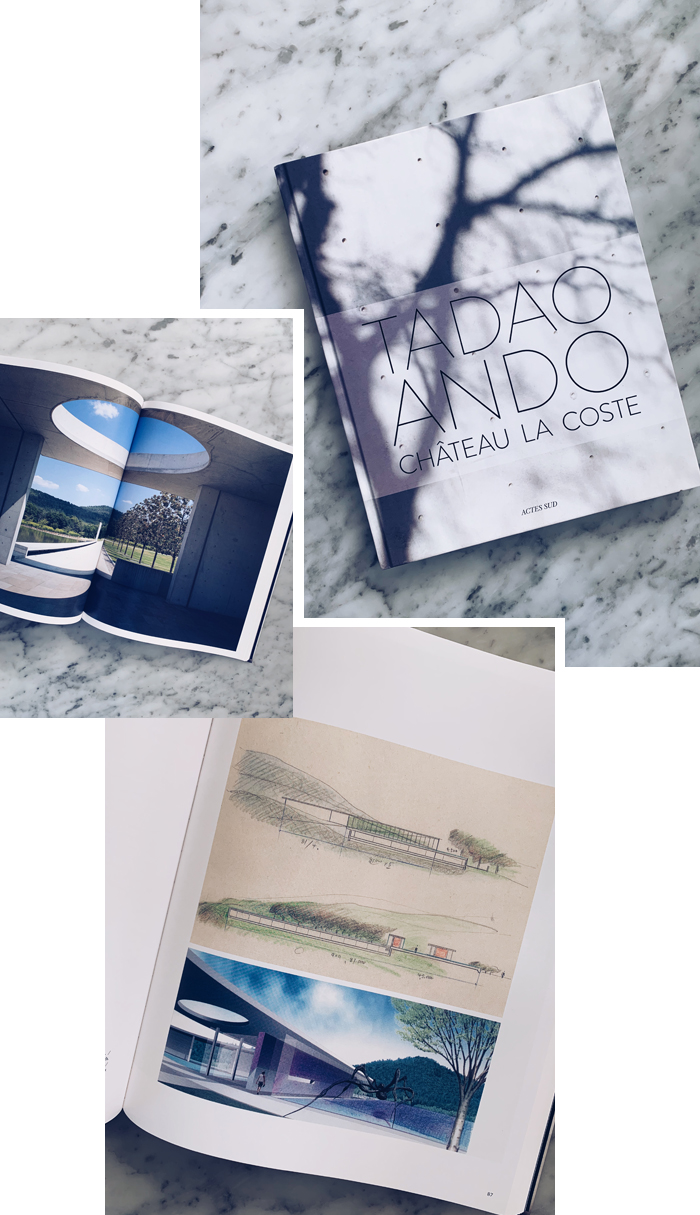
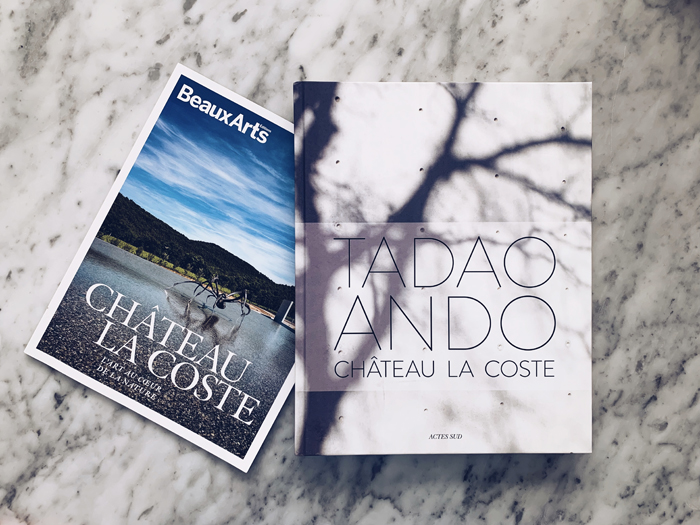
Magazine “Beaux Arts” and book“Tadao Ando Château La Coste” (Ed.Actes Sud)
A new artwork “Mater earth” by Prune Nourry was under construction at the time of my visit and promises to be impressive since it will represent a giant pregnant woman emerging from the ground. Apparently, we will be able to access the inside of her womb made of wood and unfired clay.
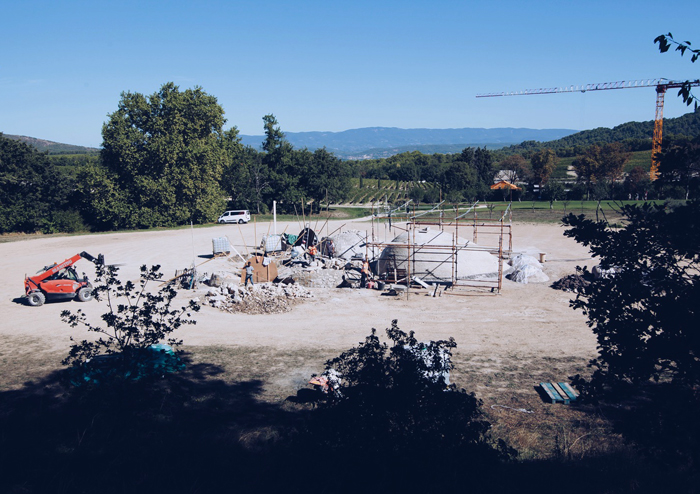
“Mater earth” by Prune Nourry in WIP
Other exhibitions are scheduled for the next few months. So many good reasons to come back! (English translation by Quiterie)

8 Comments
Violette.b
Oh la la merci une fois de plusje vais te suivre Je reviens de l’île de Porquerolles, fondation Carmignac et j’ai prévu d’y retourner en 2023 pour un road trip culturel avec la fondation Maeght, fondation Venet et fondation JG Mitterand , j’ajoute Château La Coste !
Tokyobanhbao
Ah ! Super ! Quelle bonne idée ce road trip culturel ! je prends note également ! Un grand merci !
luciluciol
Merci pour cet article qui fait bien rêver et qui donne très très envie de voir ça de ses propres yeux et de passer la même journée exceptionnelle !
Tokyobanhbao
mais de rien ! je suis ravie que ça t’inspire car c’est vraiment magnifique !
mathilde
Le lieu a l’air magnifique : tes photos font honneur à cette douce et intense ambiance. je n’avais jamais entendu parlé du château La Coste : je l’ajoute clairement sur ma TO DO list 😉 L’idée émise d’un road trip culturel plus haut est top !
Tokyobanhbao
Merci ! Je suis ravie que ça te plaise ! et le road trip culturel est clairement une idée à garder sous le coude 🙂
Guillaume R
Très belle article je vous remercie. Cependant est-ce facile d’accès en dehors d’un moyen de locomotion en voiture ? J’aimerai m’y rendre avec ma femme pour lui faire une surprise cependant nous arriverons sans doute en Train, y’a t’il des bus ?
Merci encore 🙂
Tokyobanhbao
Merci ! Comme je l’ai écrit dans mon article je ne suis pas certaine pour les bus donc je vous laisse le soin de vérifier s’il vous plaît !